As a longtime attendee and supporter of the RootsTech Conference (since 2011), I have the privilege of declaring this amazing event – BACK and better than ever! Don’t get me wrong – thanks to some amazing people, RootsTech kept going virtually through Covid – but having the in-person event back in such a big way is nothing short of a miracle!
The organizers of the RootsTech suite of events faced the biggest challenges we could ever imagine when Covid reared its ugly head. But ironically, adversity often has a way of forcing us into areas of creativity and desperation that result in an entirely new creation.
In this case, the new creation was a conference that reached global audiences and sustained our fix for genealogy education and connection despite the worst possible historical event that stretched beyond our dreaded fears.
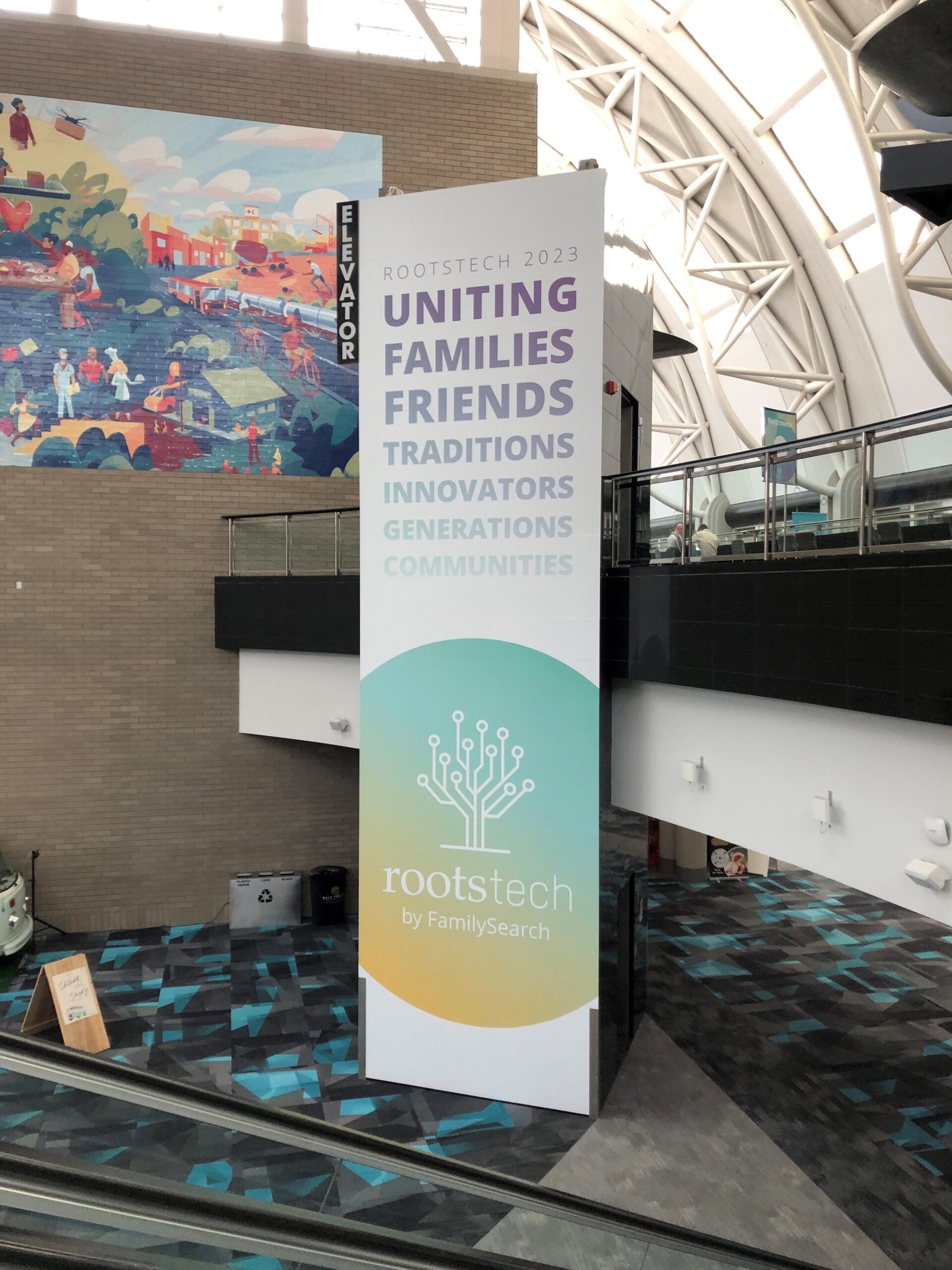 Now that 2023 has arrived and Covid has at least loosened its deadly grip on the world, the RootsTech team made the brave decision to return to Salt Lake City – in person – while keeping the virtual options fresh and alive to maintain the global connections built over the past two years.
Now that 2023 has arrived and Covid has at least loosened its deadly grip on the world, the RootsTech team made the brave decision to return to Salt Lake City – in person – while keeping the virtual options fresh and alive to maintain the global connections built over the past two years.
For those who attended this year and quipped that the conference was not as large as the years prior to Covid – I say – RootsTech is bigger in its overall reach since it is fully hybrid – and the 2023 on-site event was only slightly smaller than 2020.
I remember this conference in its infancy, back in 2011 – when the entire conference fit into the north side of the Salt Palace. That smaller footprint was sustained for a few years prior to its move to the entire venue. Even in its first year, attendance was double the average attendance of the other national genealogical society conferences – back then we had about 2 genealogy conferences that drew between 1500-2500 – and the first RootsTech more than doubled this number.
In 2020, this conference had reached its golden on-site peak at 30,000+ attendees over the course of three days, and every nook and cranny of the Salt Palace was packed with genealogy fun. None of us realized how close Covid was that year. Although, many of us found out upon our return home when the toilet paper shelves were emptying, and we had a mysterious head cold that came out of nowhere.
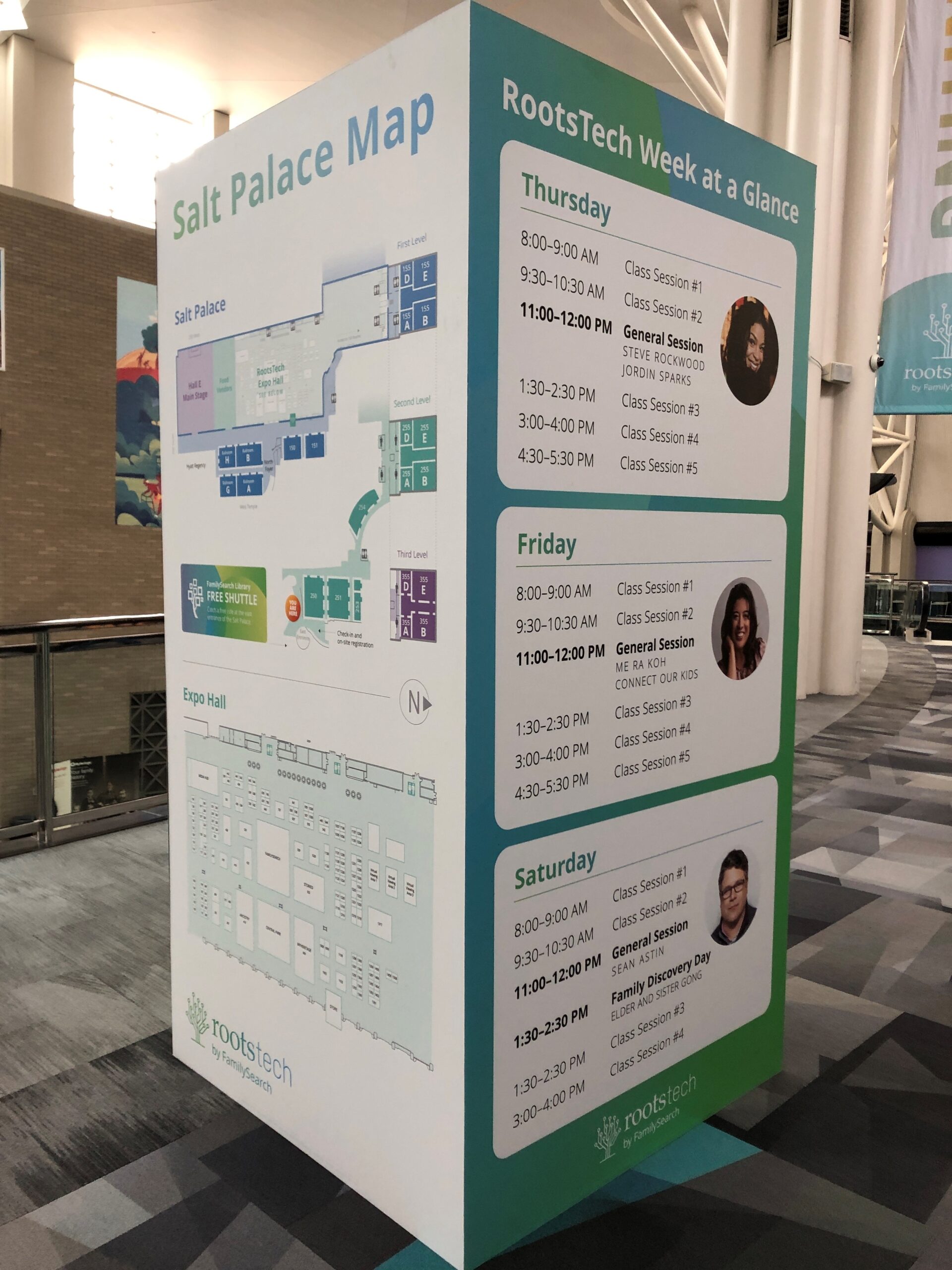 And the blunt fact that we all need to remember is that for over three years, we lived in a terrified state. So many people died or almost died across our globe. We lost too many wonderful genie friends, and we will never be the same in many ways.
And the blunt fact that we all need to remember is that for over three years, we lived in a terrified state. So many people died or almost died across our globe. We lost too many wonderful genie friends, and we will never be the same in many ways.
Despite the global terror, the RootsTech team marched on, providing us with two solid years of free virtual programming and engagement. Now that they pulled the chord to return to in-person classes, they never left the virtual attendees behind and made sure to provide an entirely different set of classes (plus live-streaming some on-site sessions) that equaled the number of in-person sessions in quality and quantity.
The result was an amazing end product that satisfied both audiences – uniting us on a scale that we have never seen before – which was a goal of this this year’s theme: Uniting. It also opens the door for more great speakers to participate without physical travel where that might be impossible or a great burden. While the on-site crowd was slightly smaller than the peak of attendance in 2020, I was delighted to see that the buzz and energy had returned. With the higher travel costs, and some folks just not ready for post-Covid travel to such a large event – the first year back was NEVER going to be as large as 2020.
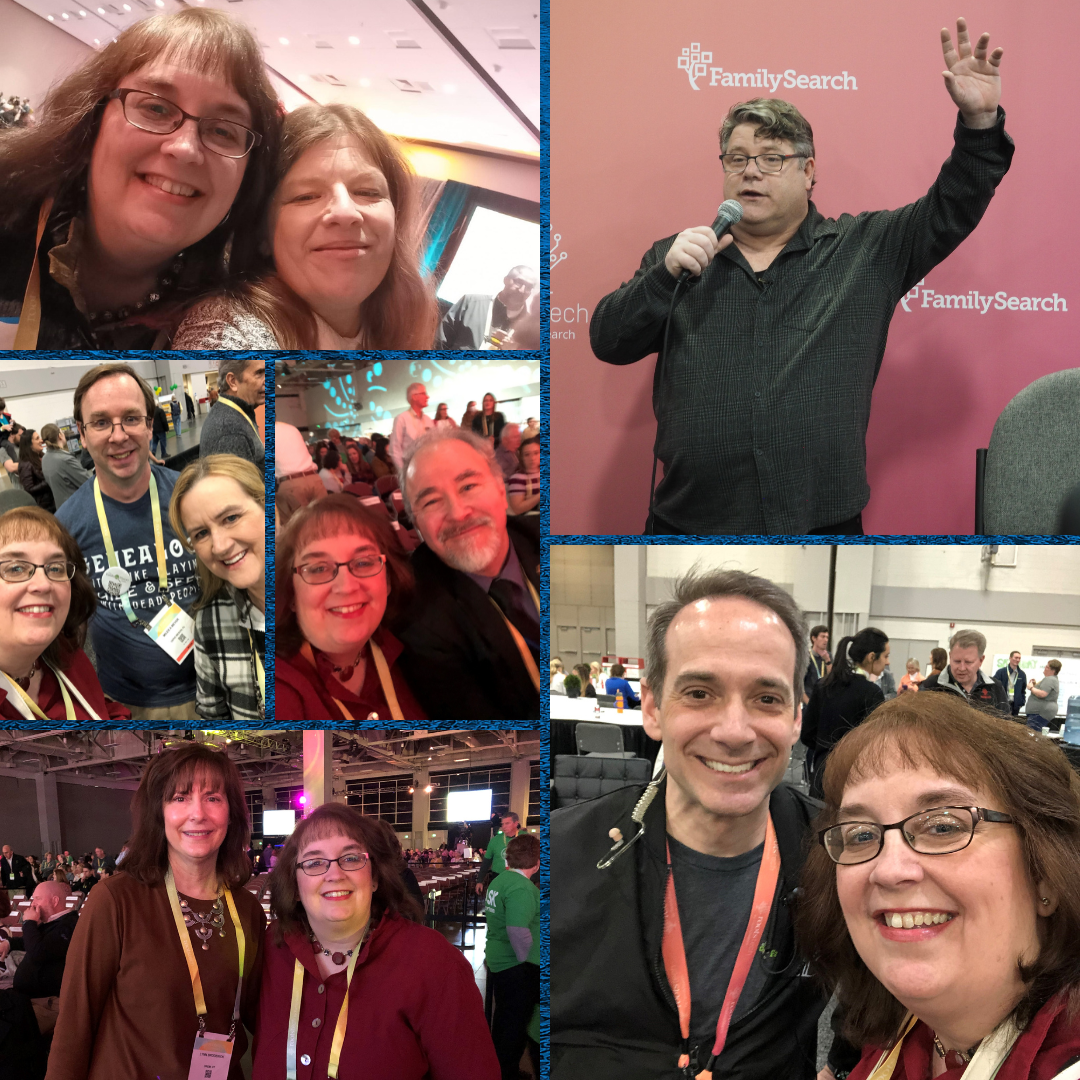 But what a wonderful turn out it turned out to be!
But what a wonderful turn out it turned out to be!
I admit to getting teary eyed a few times with all of the hugs and selfies, main stage crowds and energy, seeing audience reactions/engagement, and connecting with our genie tribe in person. The experience truly reminded me that we cannot take these experiences for granted. The truth is, we almost lost them forever. If it wasn’t for the tenacity of the RootsTech organizing team, all of this was in danger. While standing in the giant exhibit hall that is so large and full of genealogy goodness, I said a prayer of thanksgiving.
You see, as much as I love a good genealogy conference, and I’ve been to (and spoken at) many national conferences in the past dozen or so years, there has never been anything to compare to RootsTech. All I have written so far should put this yearly event on your genealogy bucket list – and if you need more incentive – that exhibit hall is larger than ANY you have seen in the genealogy field. All the others are very small shadows compared to the RootsTech exhibit hall – and – once you’ve seen it, you can’t unsee it.
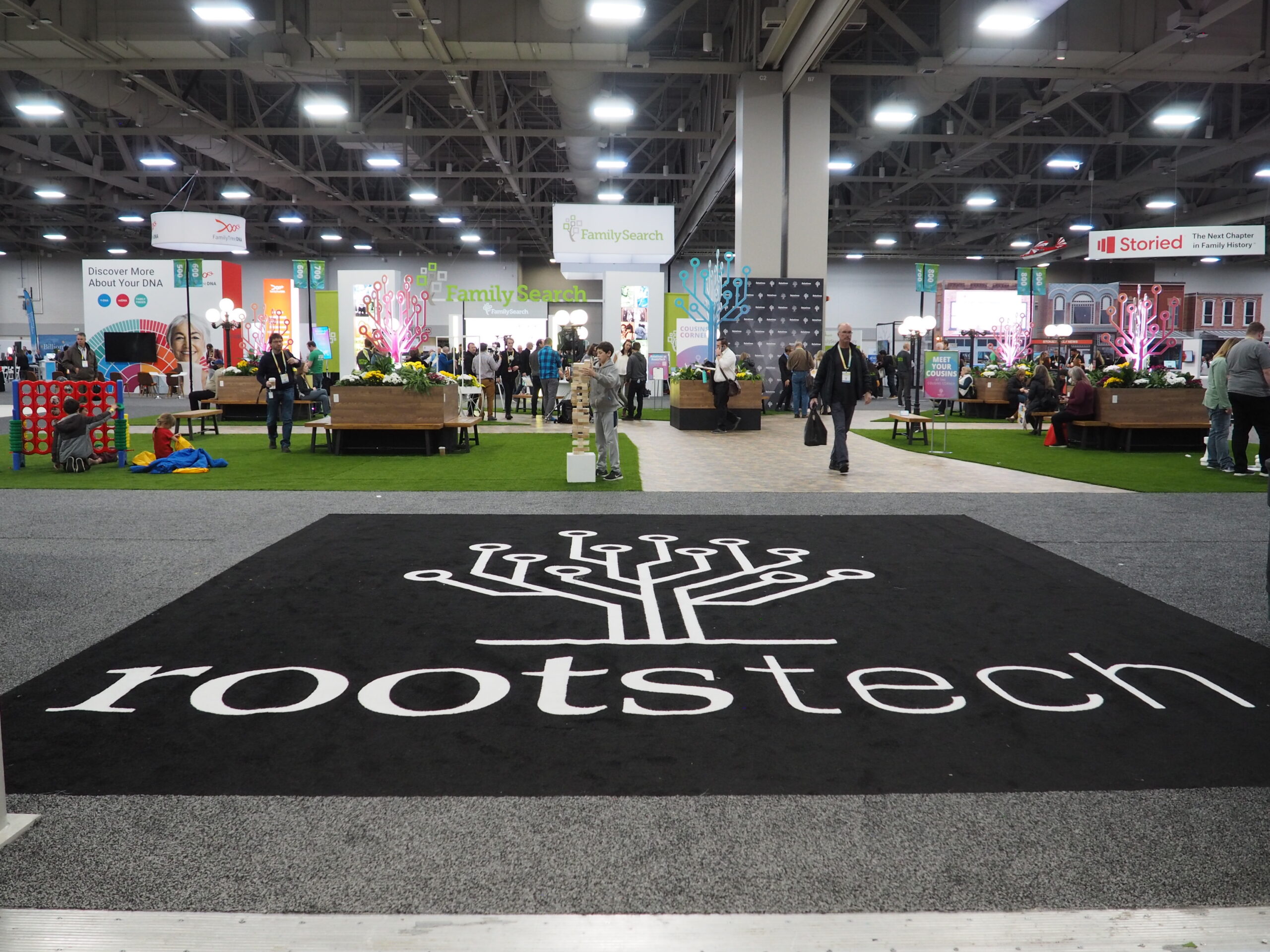
Some highlights of this year:
With some slightly smaller attendance numbers, the footprint of the event was roughly the same – so everything felt, familiar, comfortable, and slightly less cramped in your favorite sessions.
The energy, connections, and buzz were back in the main stage, the exhibit hall, and the sessions! This is why we come to RootsTech, and it did not disappoint!
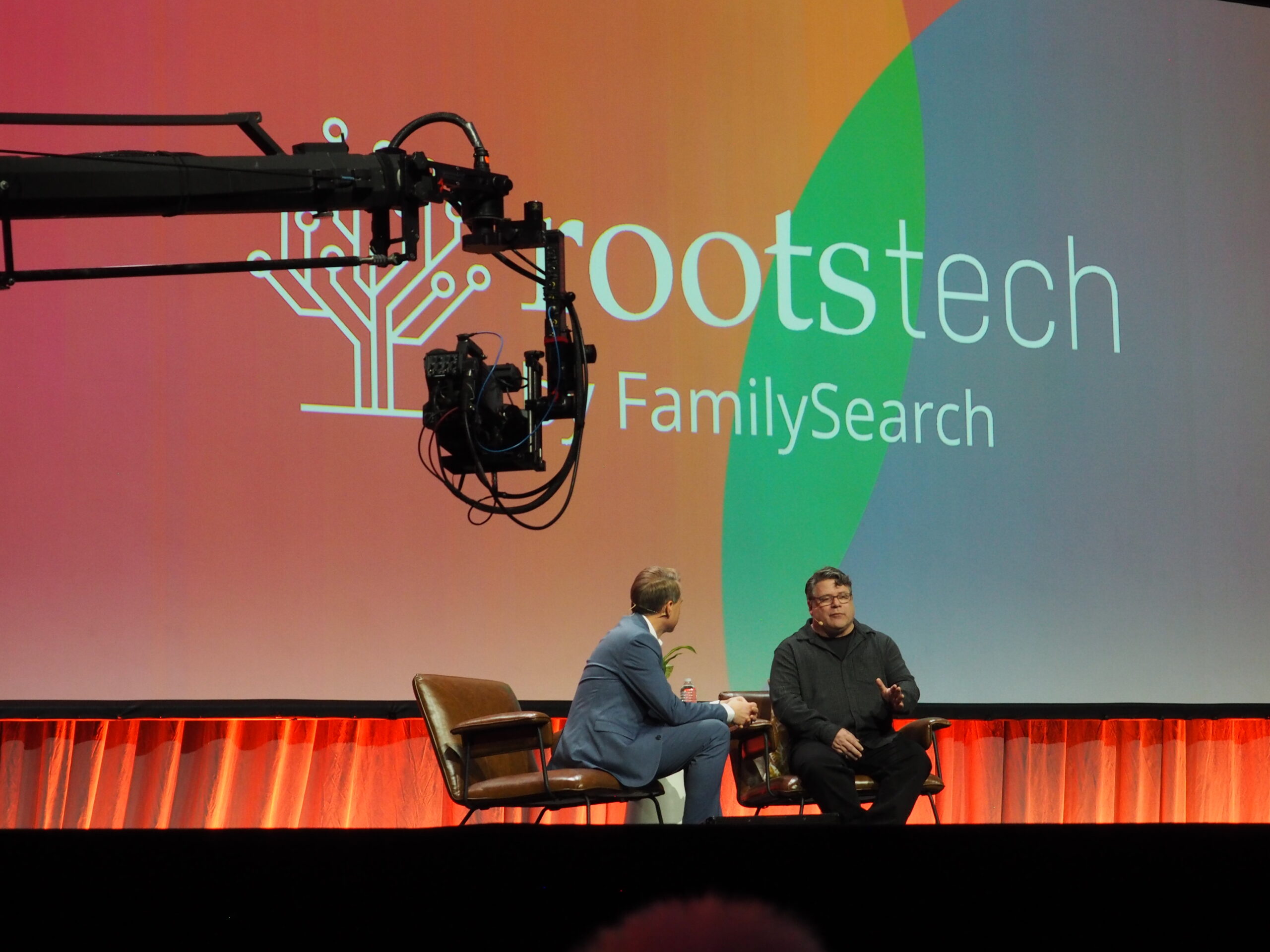
Registration was seamless and extremely efficient – no bags this year – but with registration cost down to around $100 + FREE virtual sessions, the bargain was significant! All of your favorite celebrity genies were there to deliver quality sessions and welcome everyone back to the genealogy event of the year!
Big announcements came from the major vendors, and Family Search – announcing so many tech tools and enhancements to the products. I could never list everything here – but do yourself a favor and virtually revisit the exhibitors/vendors from this year’s virtual and on-site events. It’s still the winter months, so it’s a great time to explore their sites more fully. Some of them are even still offering conference specials and discounts for their products – so, hurry up – time’s a wastin’!
 In my previous post, I announced that I had been selected to give 6 sessions this year – one was live streamed and can be watched here (Navigating Racial Challenges in DNA Matches, with Donald Shores) – but two of the sessions were hands-on workshops given at the Family Search Library (formerly known as the Family History Library) as a part of RootsTech – and co-sponsored by my employer, the National Society of the Sons of the American Revolution!
In my previous post, I announced that I had been selected to give 6 sessions this year – one was live streamed and can be watched here (Navigating Racial Challenges in DNA Matches, with Donald Shores) – but two of the sessions were hands-on workshops given at the Family Search Library (formerly known as the Family History Library) as a part of RootsTech – and co-sponsored by my employer, the National Society of the Sons of the American Revolution!
This workshop format was a new concept, and I was honored to be a part of the inaugural series launch in conjunction with the RootsTech offerings. These sessions were listed as a part of the on-site session list, but pre-registration was required since class size was limited to 50 each. The classes I gave on historic photography and preservation were full within a couple days of listing, and we even opened up for ten more people each class (which meant ordering more gloves prior to flying to SLC) – but of course, even that wasn’t enough, and we had more people wanting to squeeze in. The educational benefits of these classes included not only holding the various photographic formats in their hands – but all attendees went home with two pairs of gloves and a sampling of enclosures to get them started in preserving their own photographs at home.
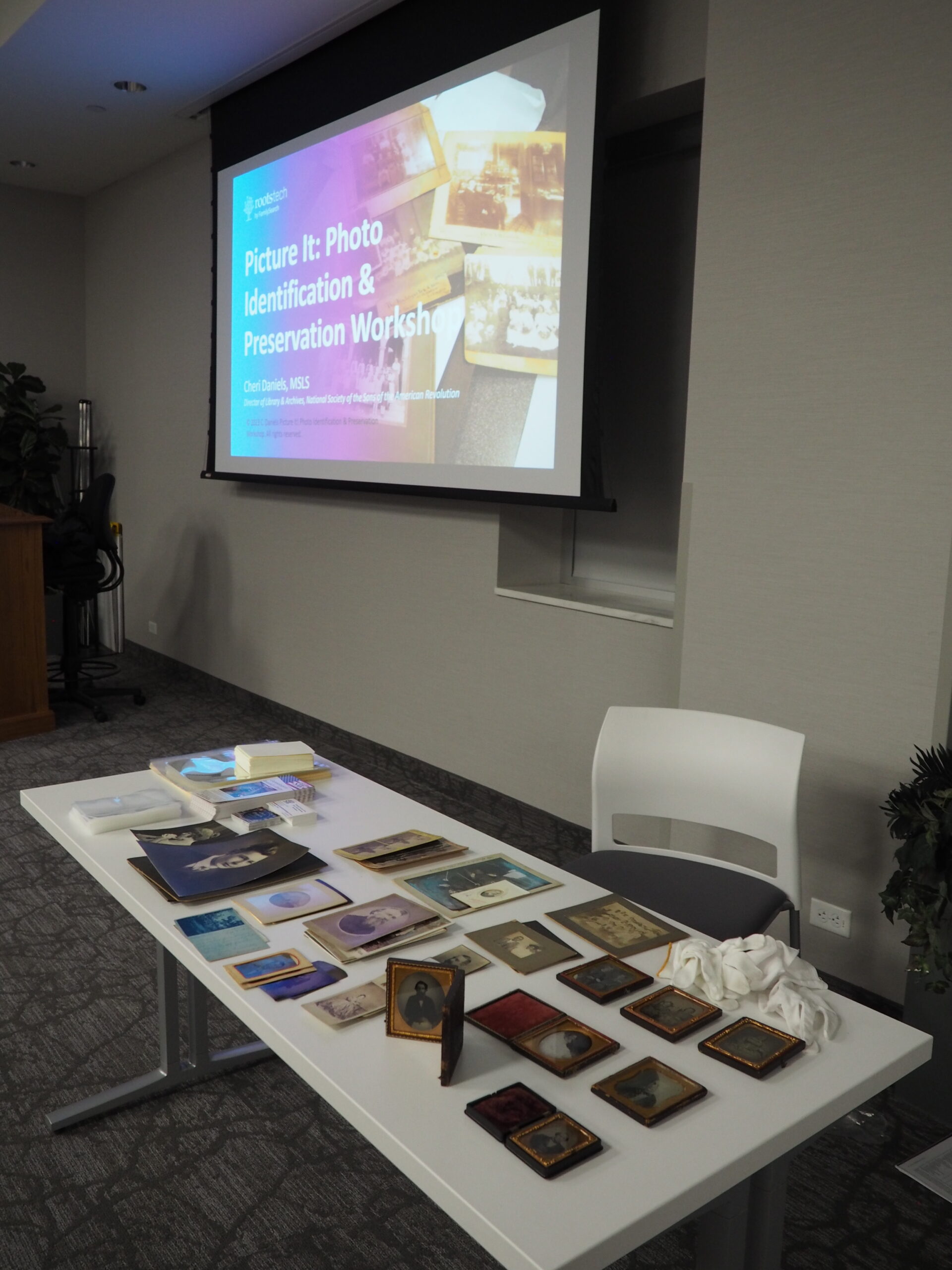
And lastly…the amazing keynote speakers provided incredible high points as usual. Most of these can still be viewed on the RootsTech main website. Of course, my favorite of Sean Astin! Getting to meet him in person was an experience I will never forget. “Goonies never say die!”
Here are my final thoughts:
- With so many sessions available for free on the RootsTech website (sessions from 2020-2023) – RootsTech is NEVER over! Invest in your own genealogy education and development by viewing these great sessions over the next year.
- Now that the inaugural post-Covid event is under our belt, you know this on-site event is going to continue to grow each year – so put this back on your genealogy bucket list. Every genealogist should attend at least once in their lifetime!
- Despite the large crowds, very few masks, and lots of hugs, conversations, and mass transit (planes, trains, & automobiles) – no one in my party came home sick – nor have I heard of any widespread illness during, nor upon our return. In 2020, it feels like we all got sick during or after. This is a wonderful sign about our (hopefully) post-Covid existence.
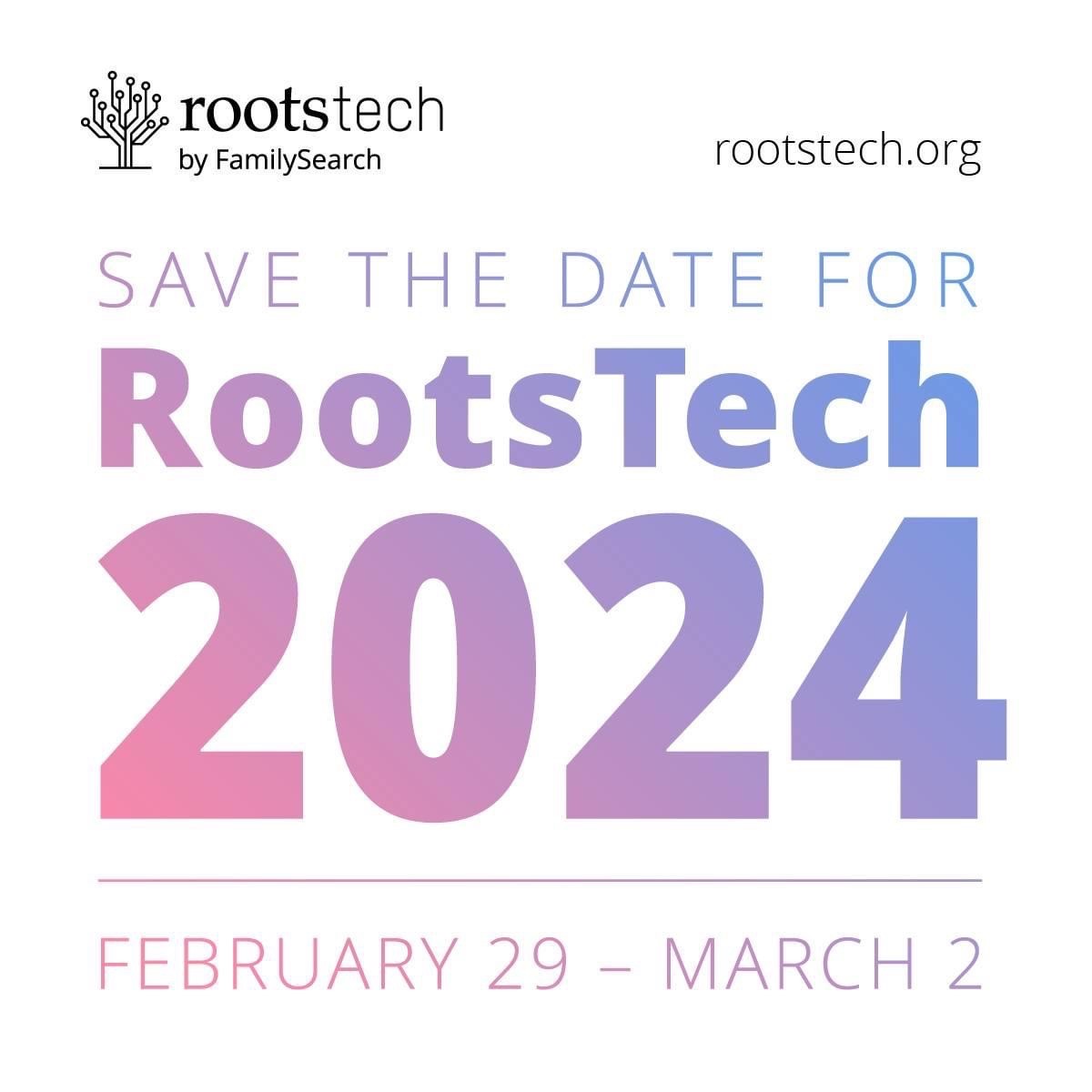 If you plan on coming out next year – the dates have already been set, and one word of planning caution – from what I observed – with both merchandise and the food set-up – this conference has moved to a cashless system.
If you plan on coming out next year – the dates have already been set, and one word of planning caution – from what I observed – with both merchandise and the food set-up – this conference has moved to a cashless system.- Be watching for a post-event podcast episode coming soon via BloodRoot as my RootsTech posse gathers once again to chat about our 2023 experience!
- If you are in the Louisville/Kentuckiana region – be on the lookout for the Picture It! Workshops to be given again this summer at the NSSAR headquarters. Keep an eye on the events page of library.sar.org for coming announcements.
Thanks to all who attended my sessions and have reached out since – y’all make the work so worth while!
Wishing everyone a safe 2023, and – hopefully – look forward to seeing even more of you in SLC in 2024!

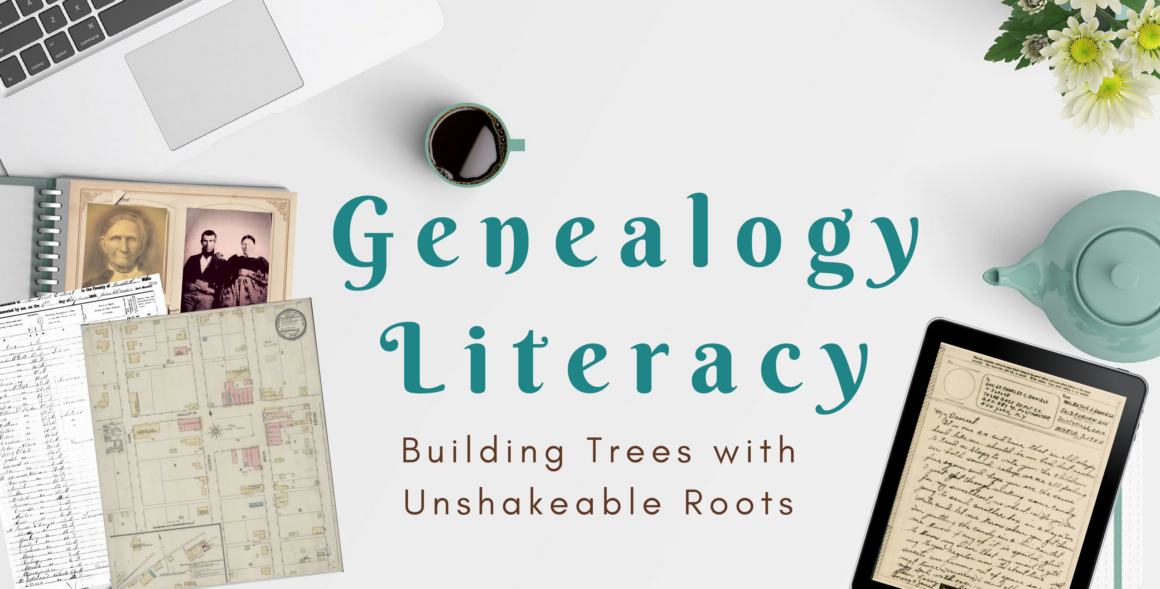
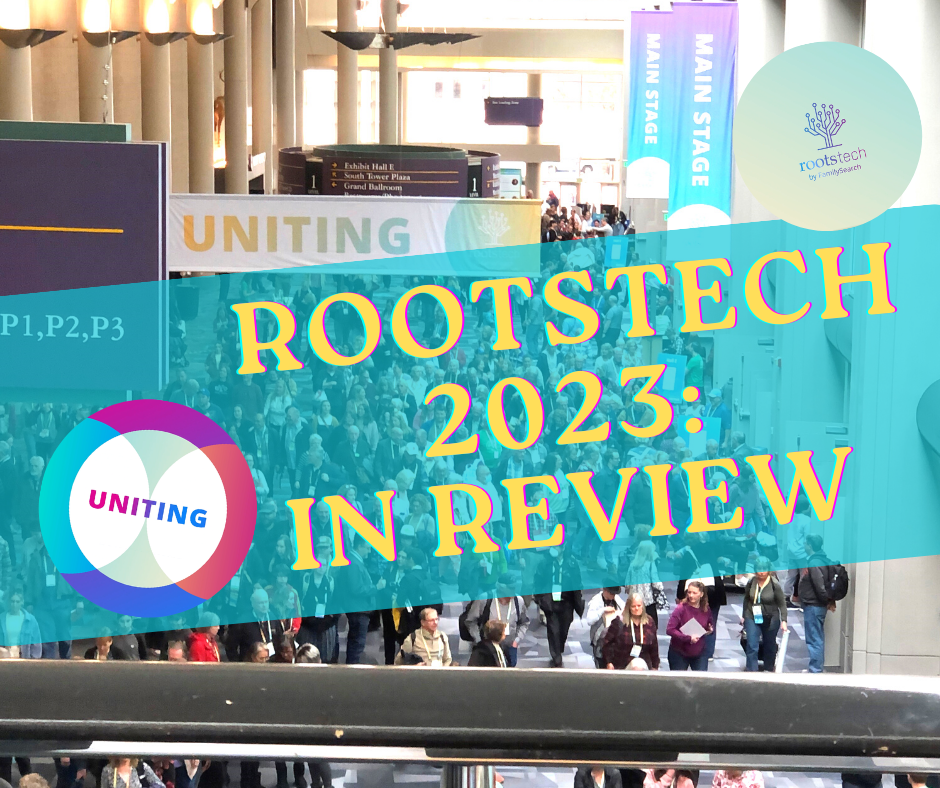
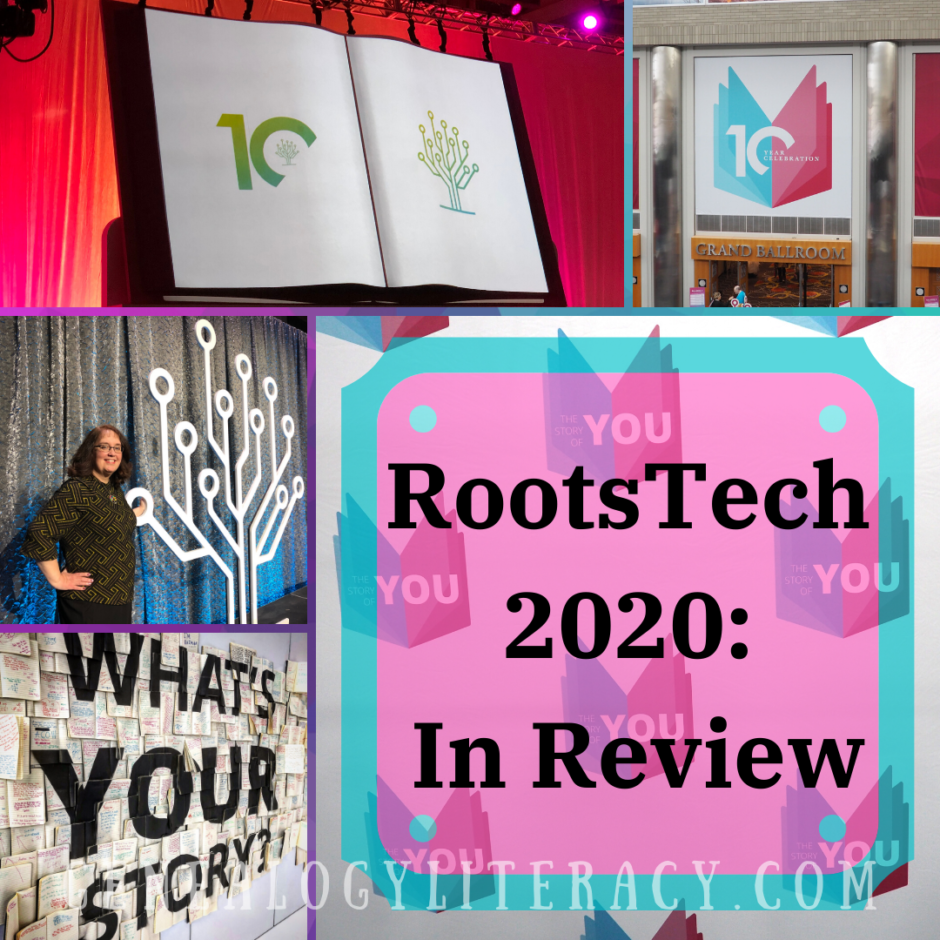
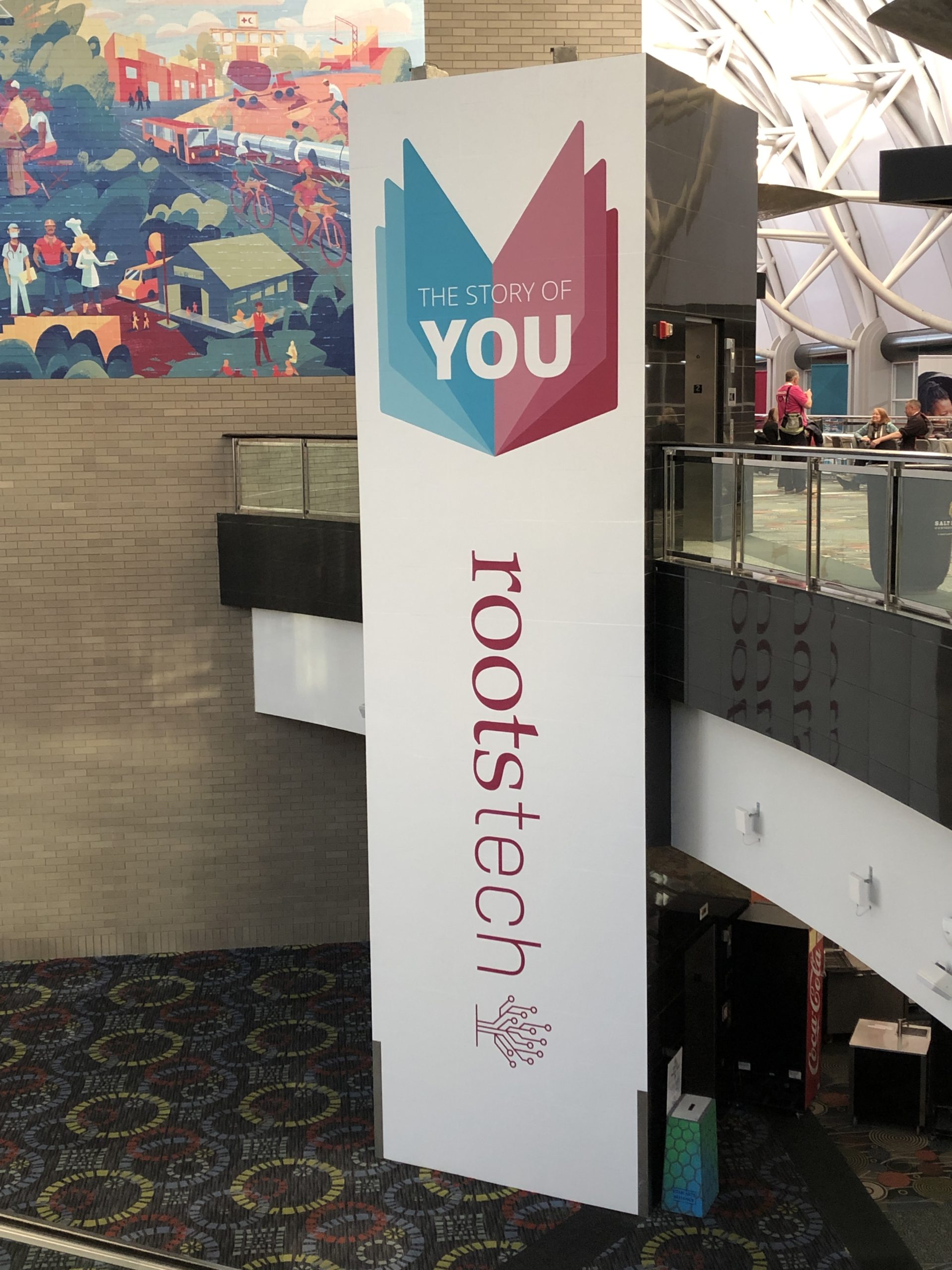 The Story of YOU:
The Story of YOU: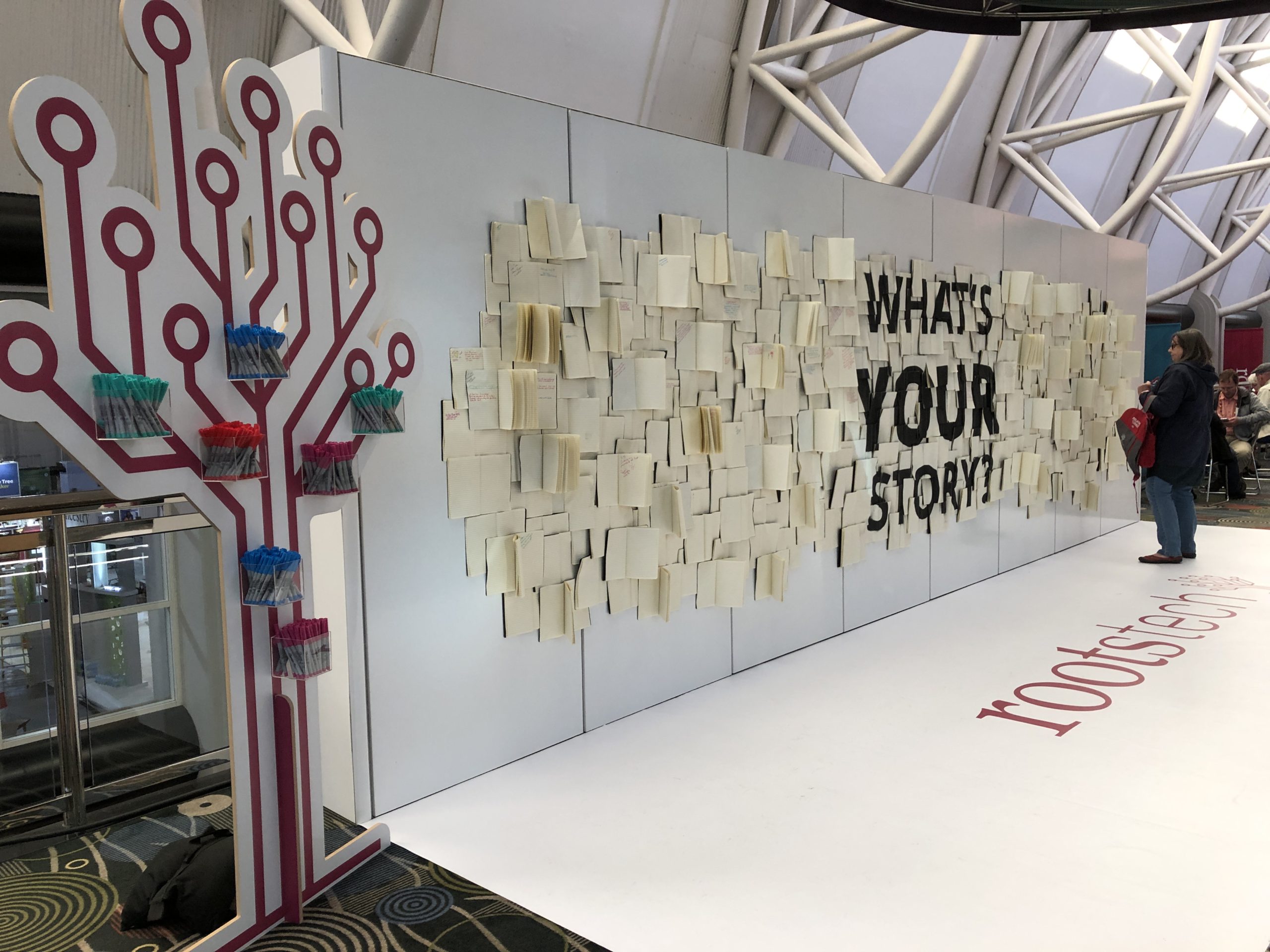
 Speaker:
Speaker: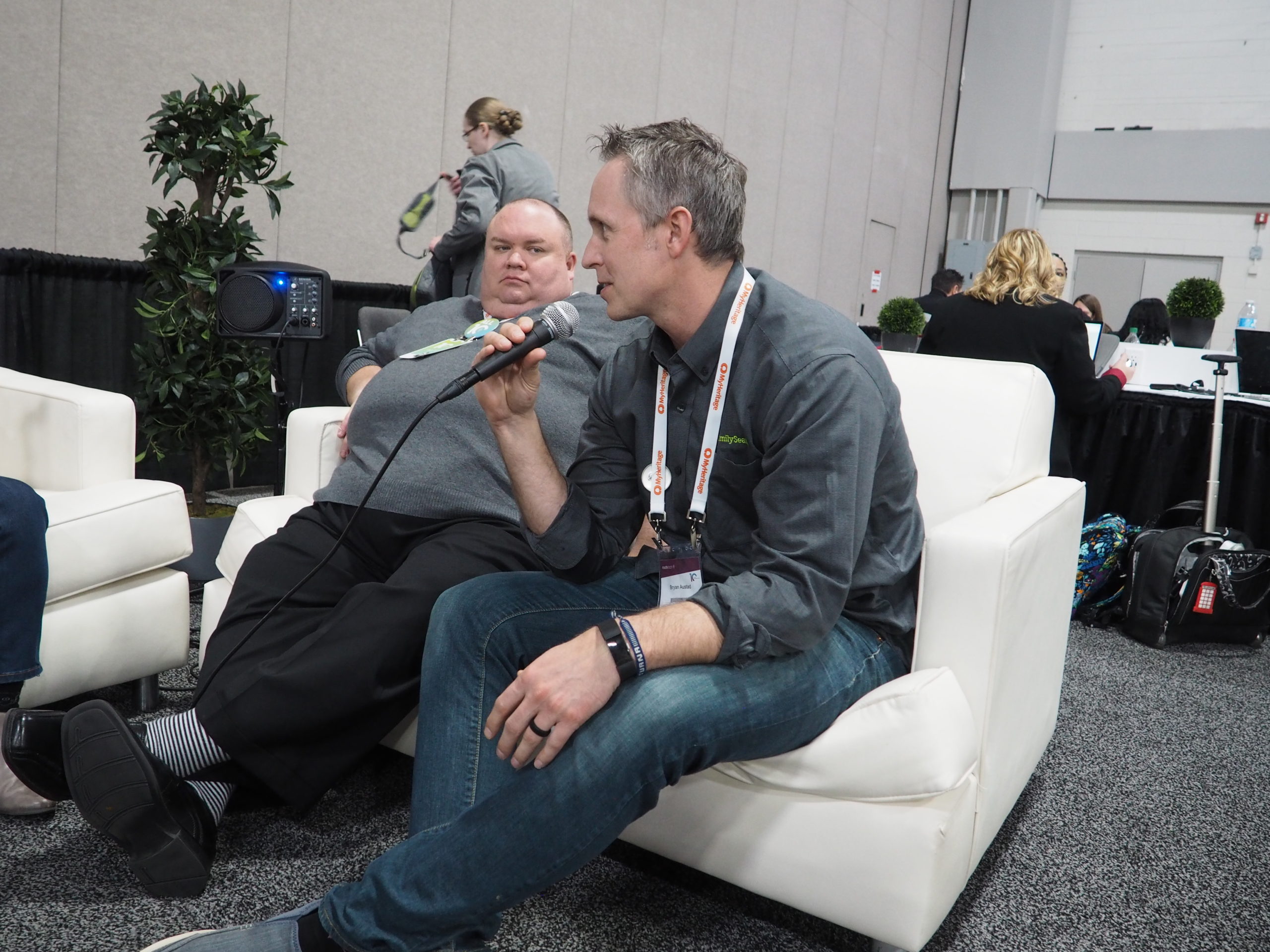
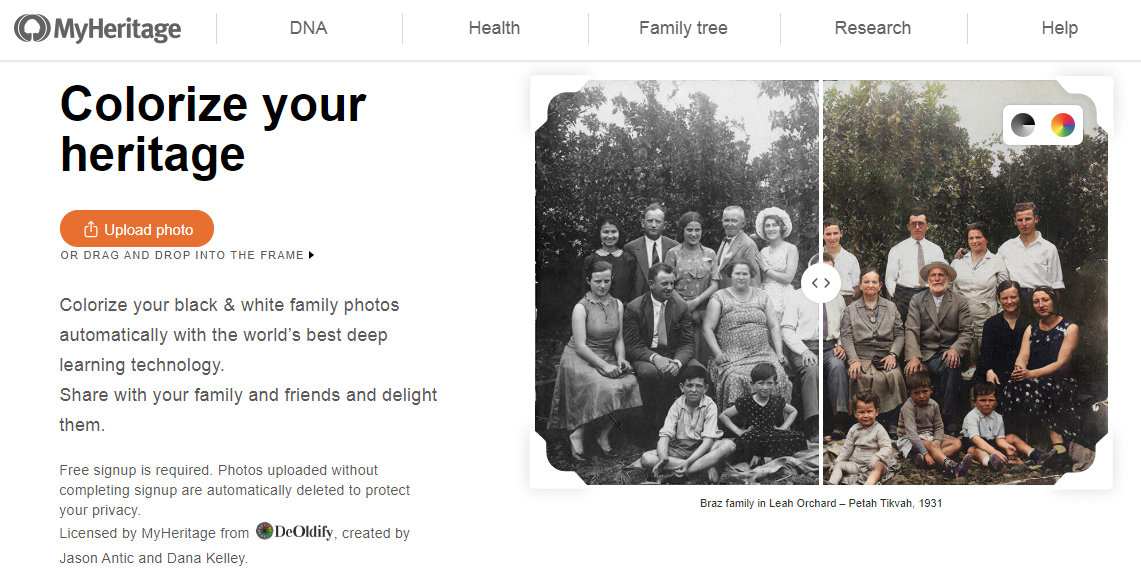
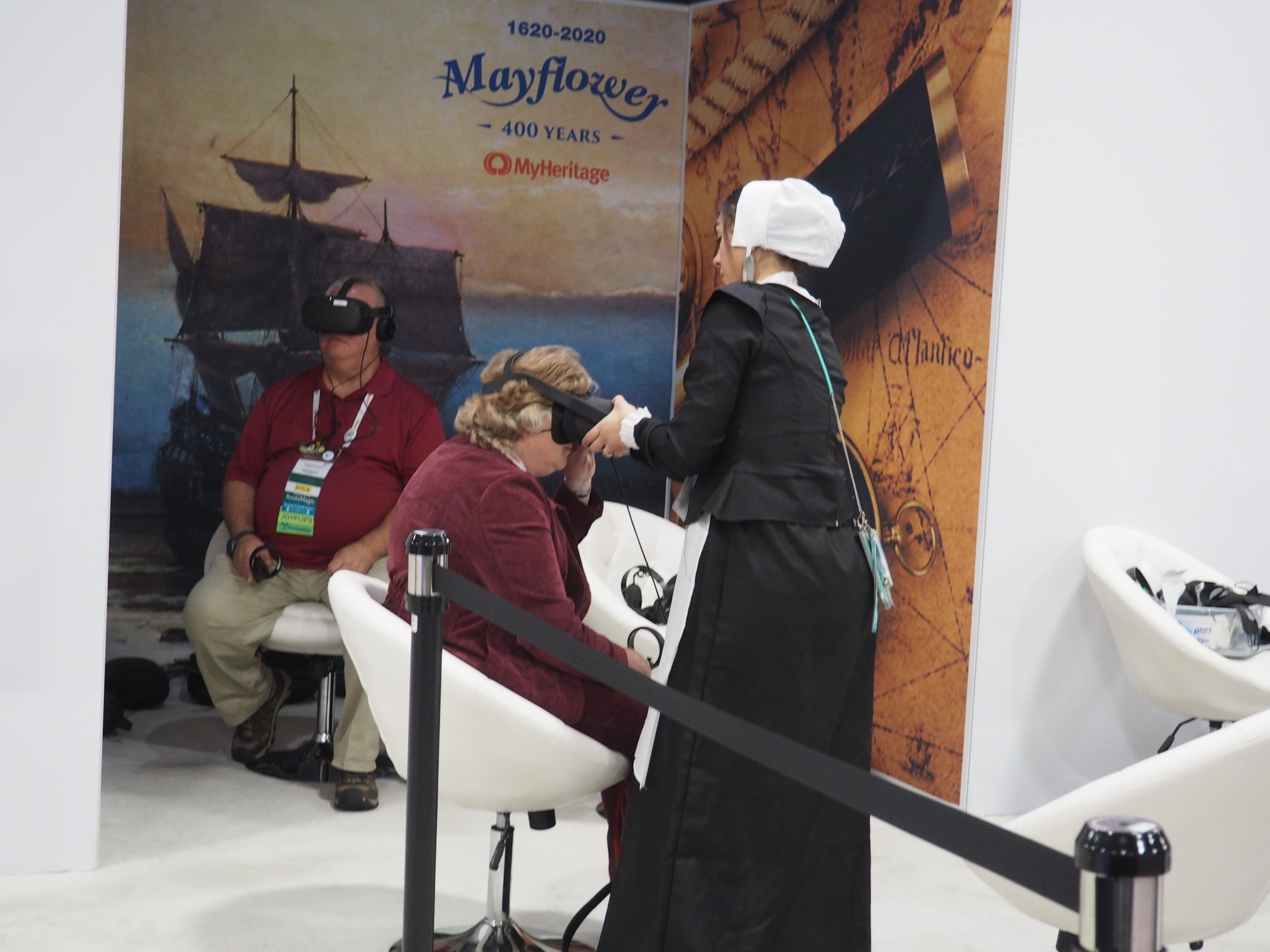
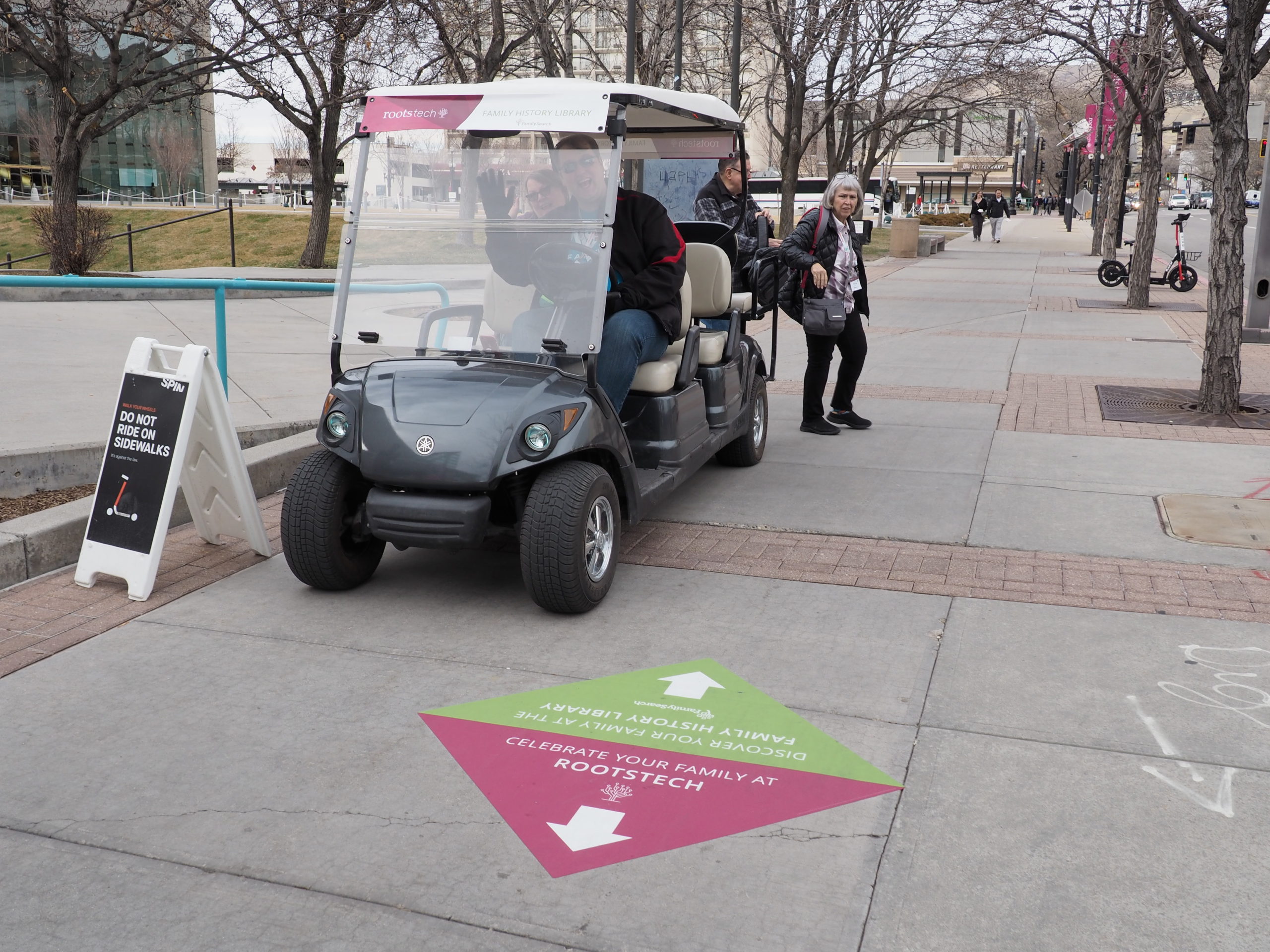
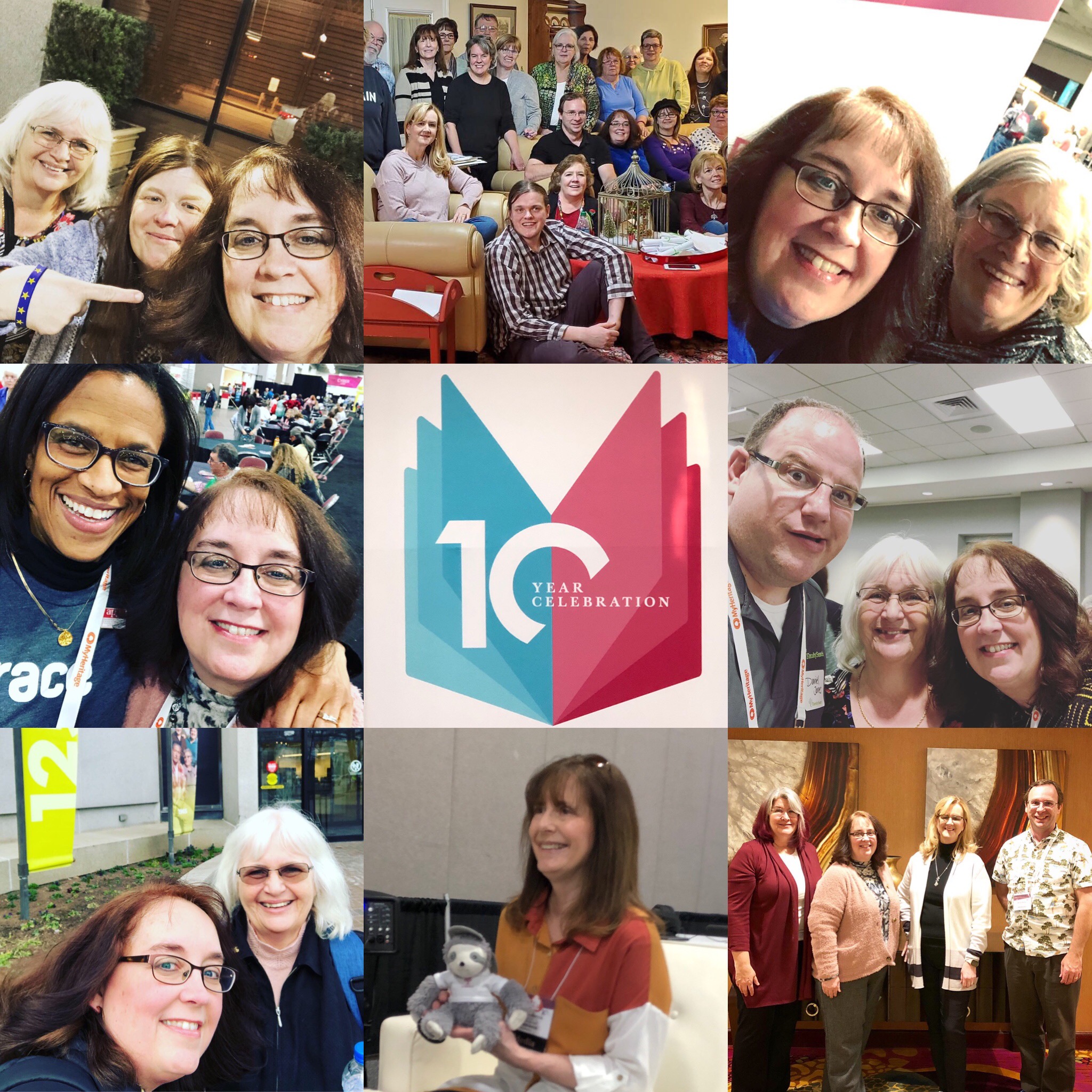
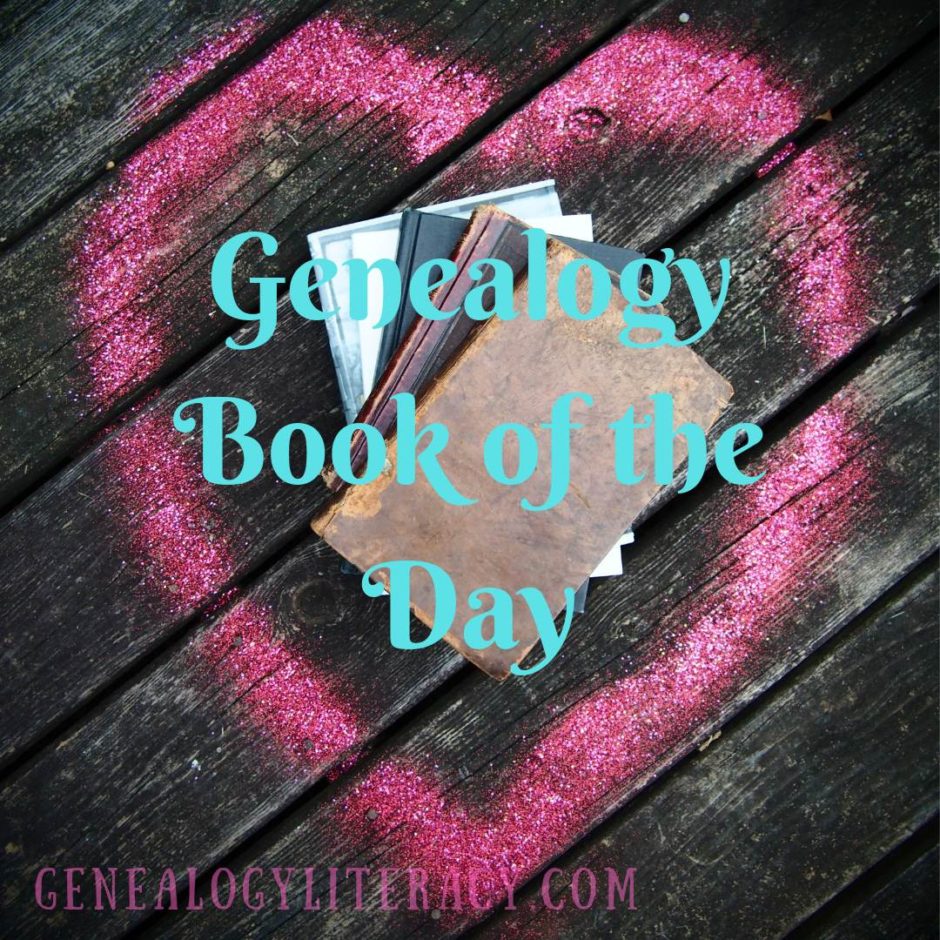
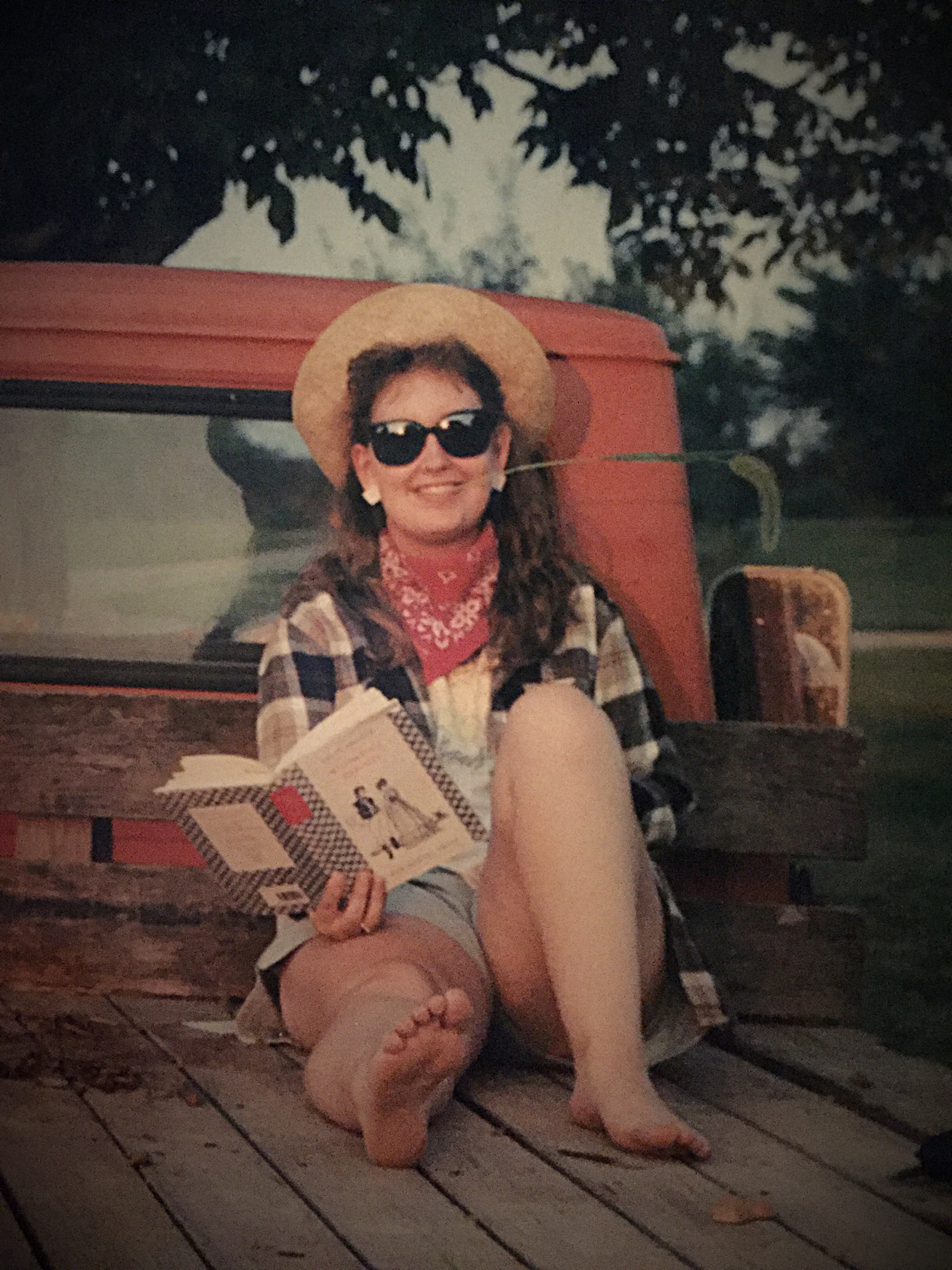
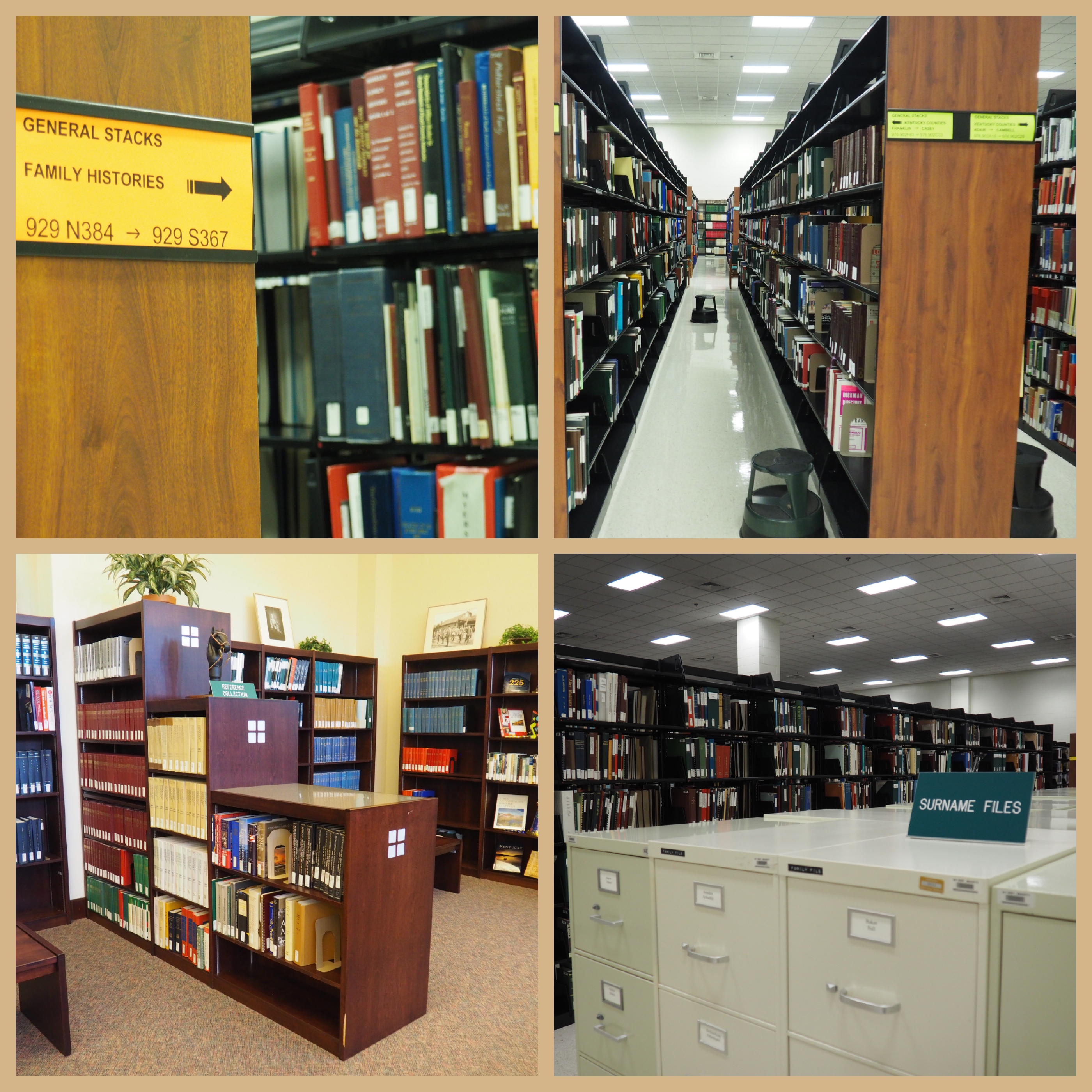
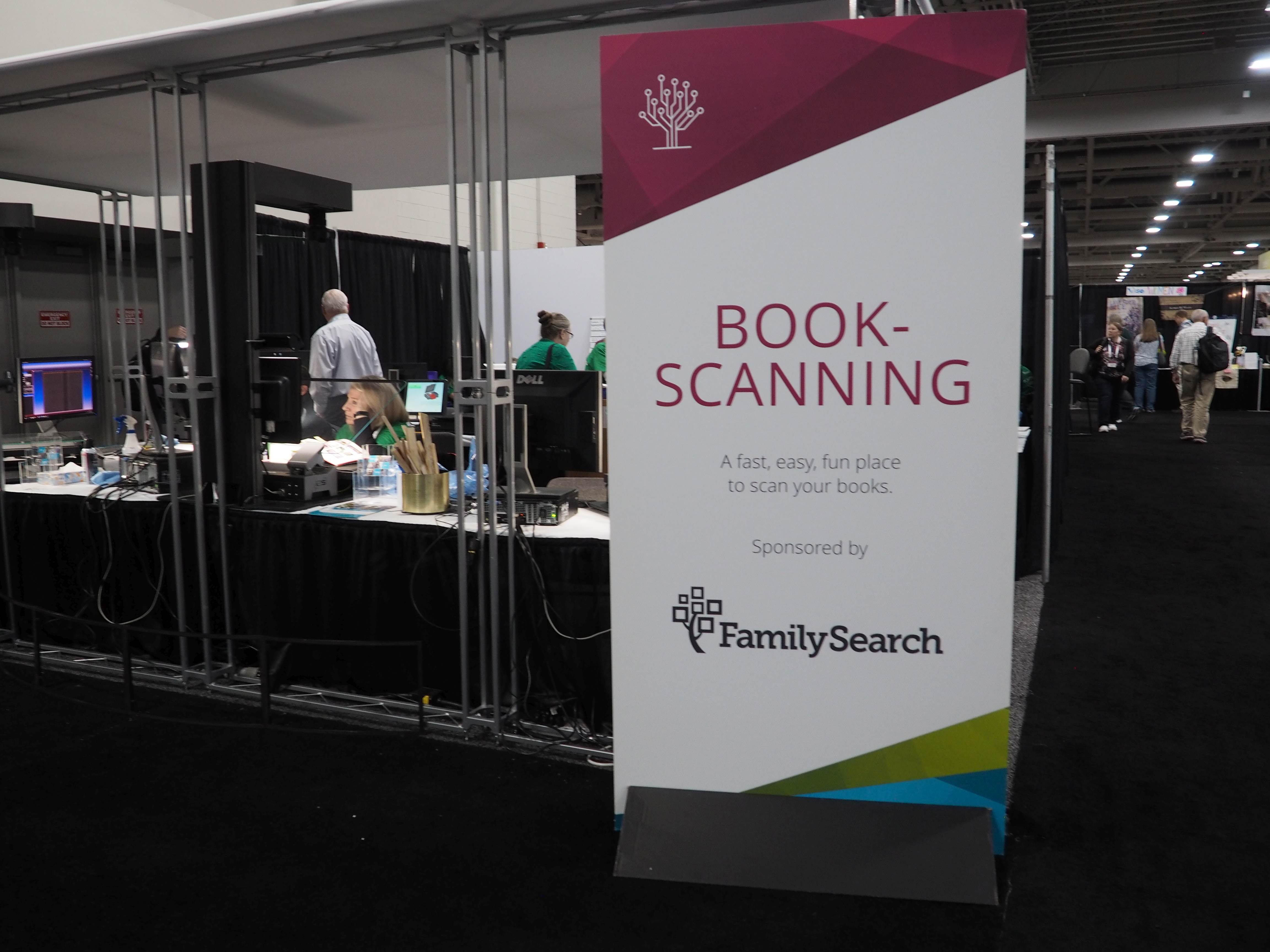


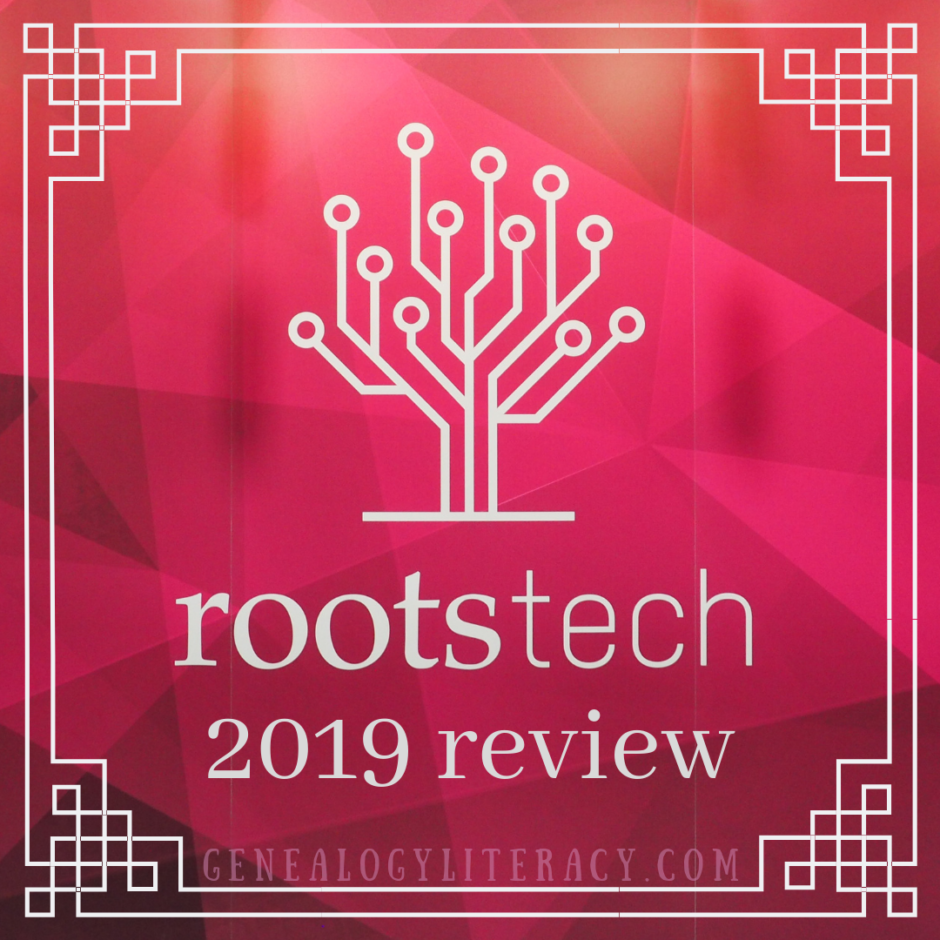
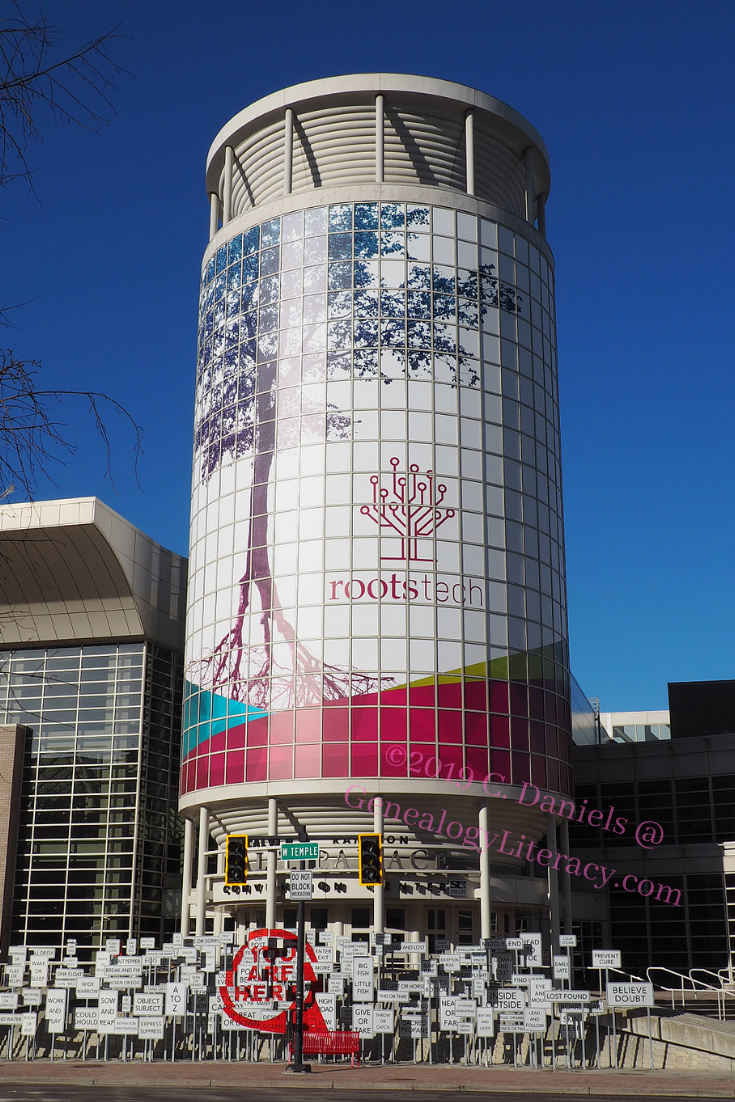 Psssst….
Psssst….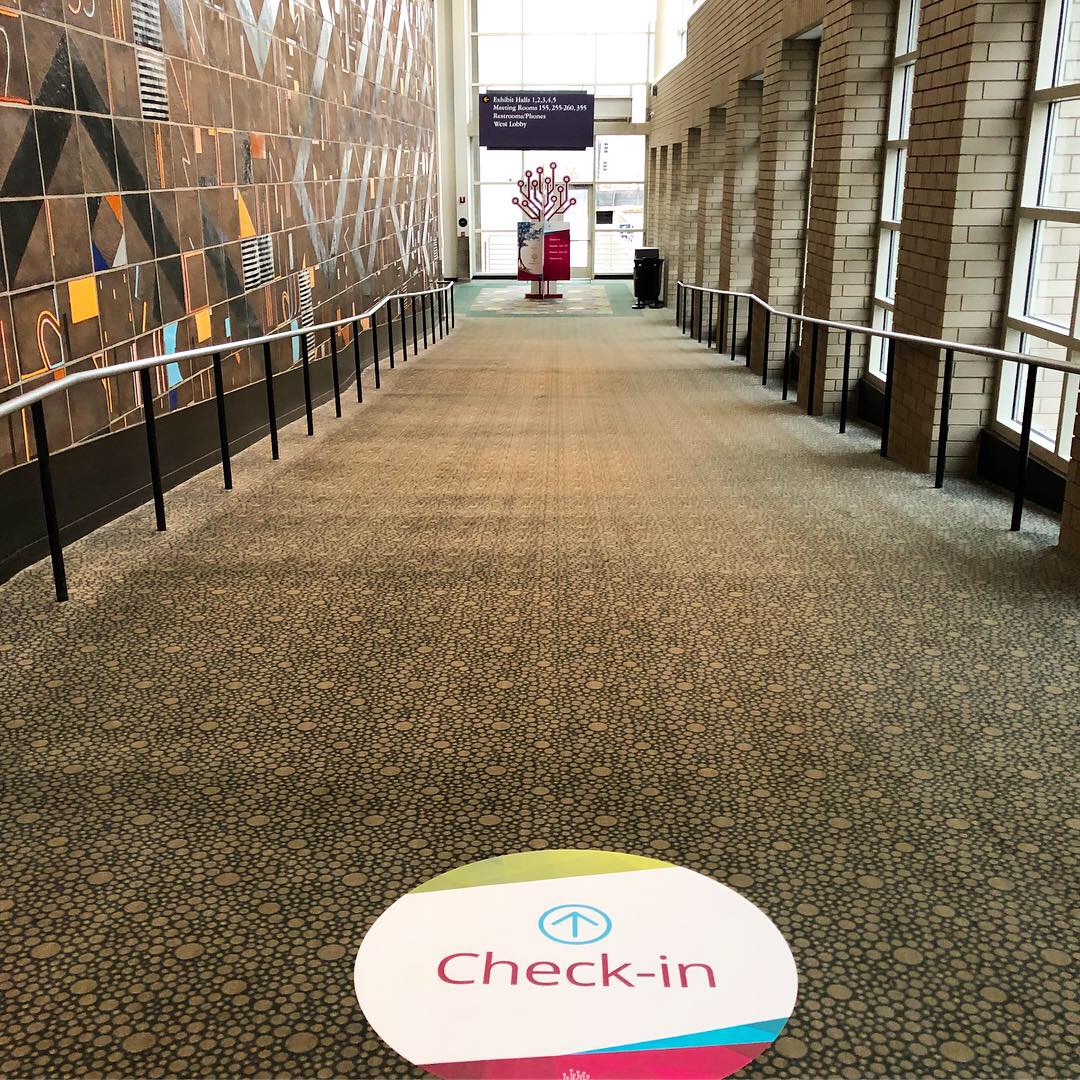 Spreading out – By placing check-in over on the far side of the Salt Palace, along with a few of the sessions, there was more breathing room. Heading over in that area brought back memories from the early years when RootsTech was only on the north side of the Palace. Look how far it has grown!
Spreading out – By placing check-in over on the far side of the Salt Palace, along with a few of the sessions, there was more breathing room. Heading over in that area brought back memories from the early years when RootsTech was only on the north side of the Palace. Look how far it has grown!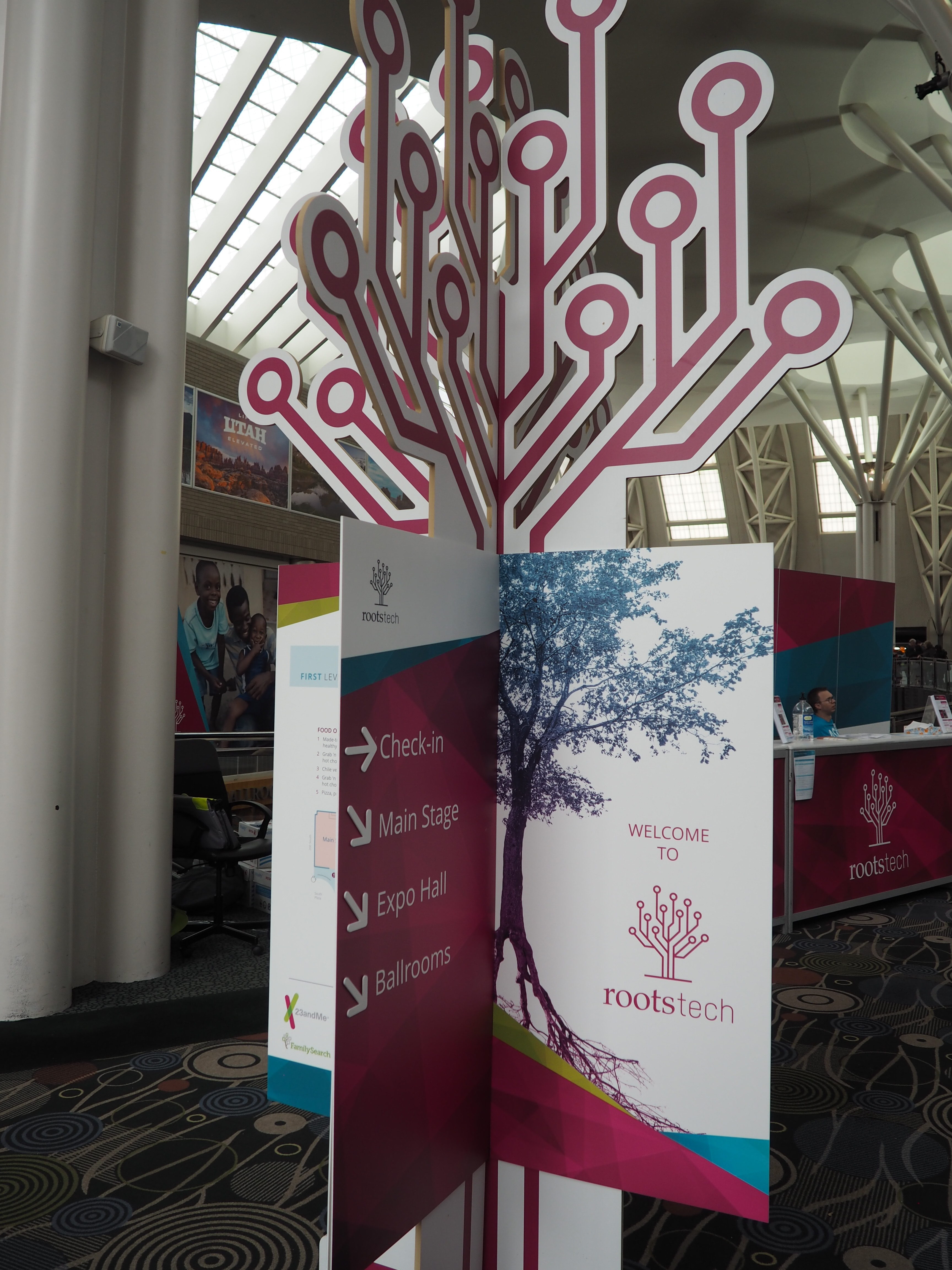 Great signage! Vertical and horizontal signage everywhere – even under your feet!
Great signage! Vertical and horizontal signage everywhere – even under your feet!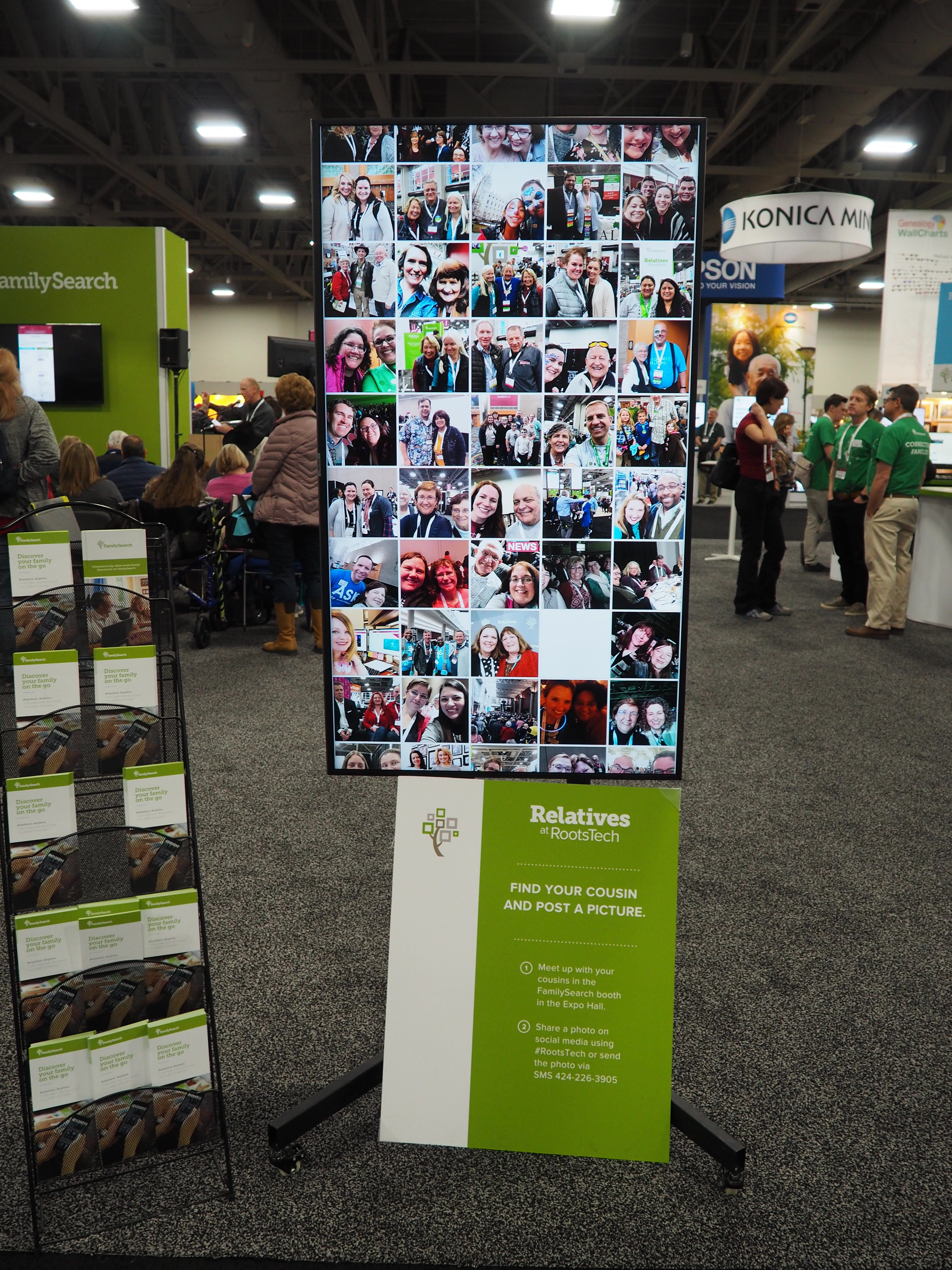 The Find Relatives at RootsTech Game – If you had ever entered even a small amount of generational information in the Family Search Family Tree, you were connected to the cousin three ring circus. But what a hoot it was! As the conference grew, there were over 9,000 people participating, and I matched as a cousin to over 2,500 of them – including David Rencher and Crista Cowan! One of the funniest moments was when I connected to a local Kentucky genealogist whom I’ve known for years, and live within 10 miles of, and who comes to RootsTech every year – Here we are – our cousin selfie! :
The Find Relatives at RootsTech Game – If you had ever entered even a small amount of generational information in the Family Search Family Tree, you were connected to the cousin three ring circus. But what a hoot it was! As the conference grew, there were over 9,000 people participating, and I matched as a cousin to over 2,500 of them – including David Rencher and Crista Cowan! One of the funniest moments was when I connected to a local Kentucky genealogist whom I’ve known for years, and live within 10 miles of, and who comes to RootsTech every year – Here we are – our cousin selfie! :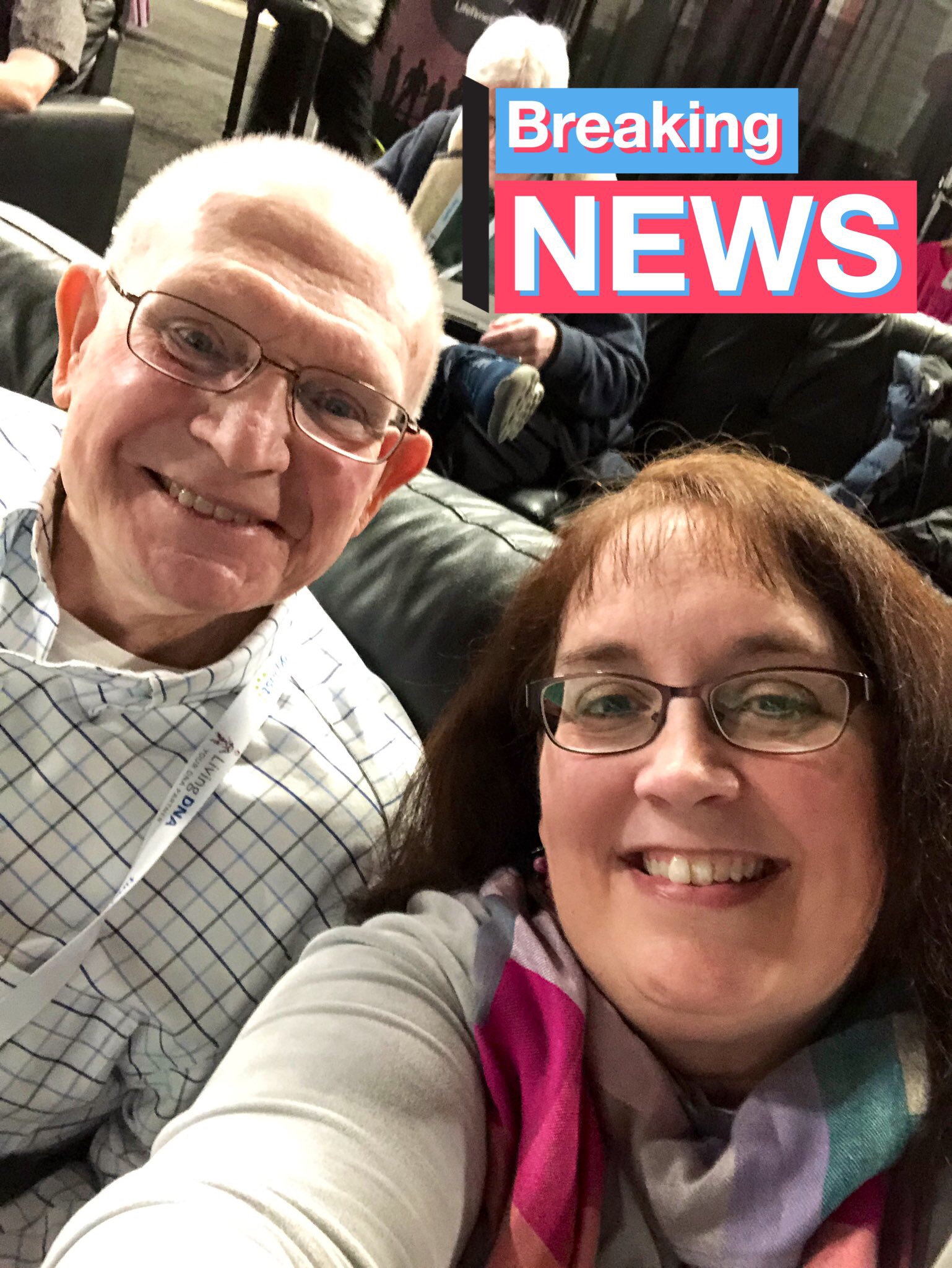


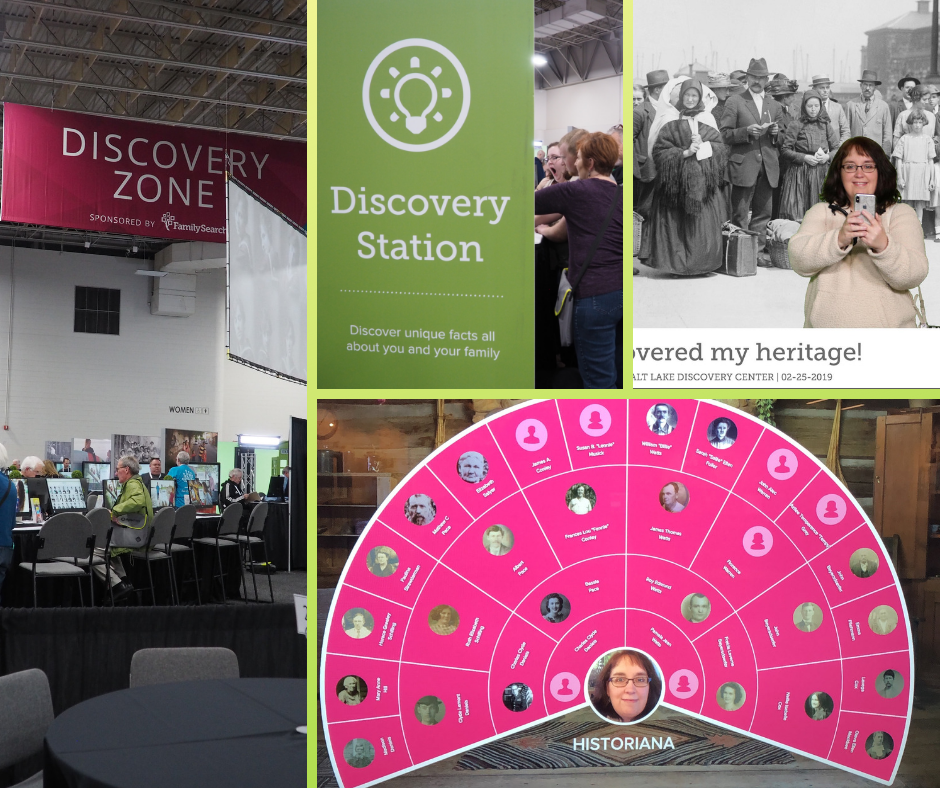

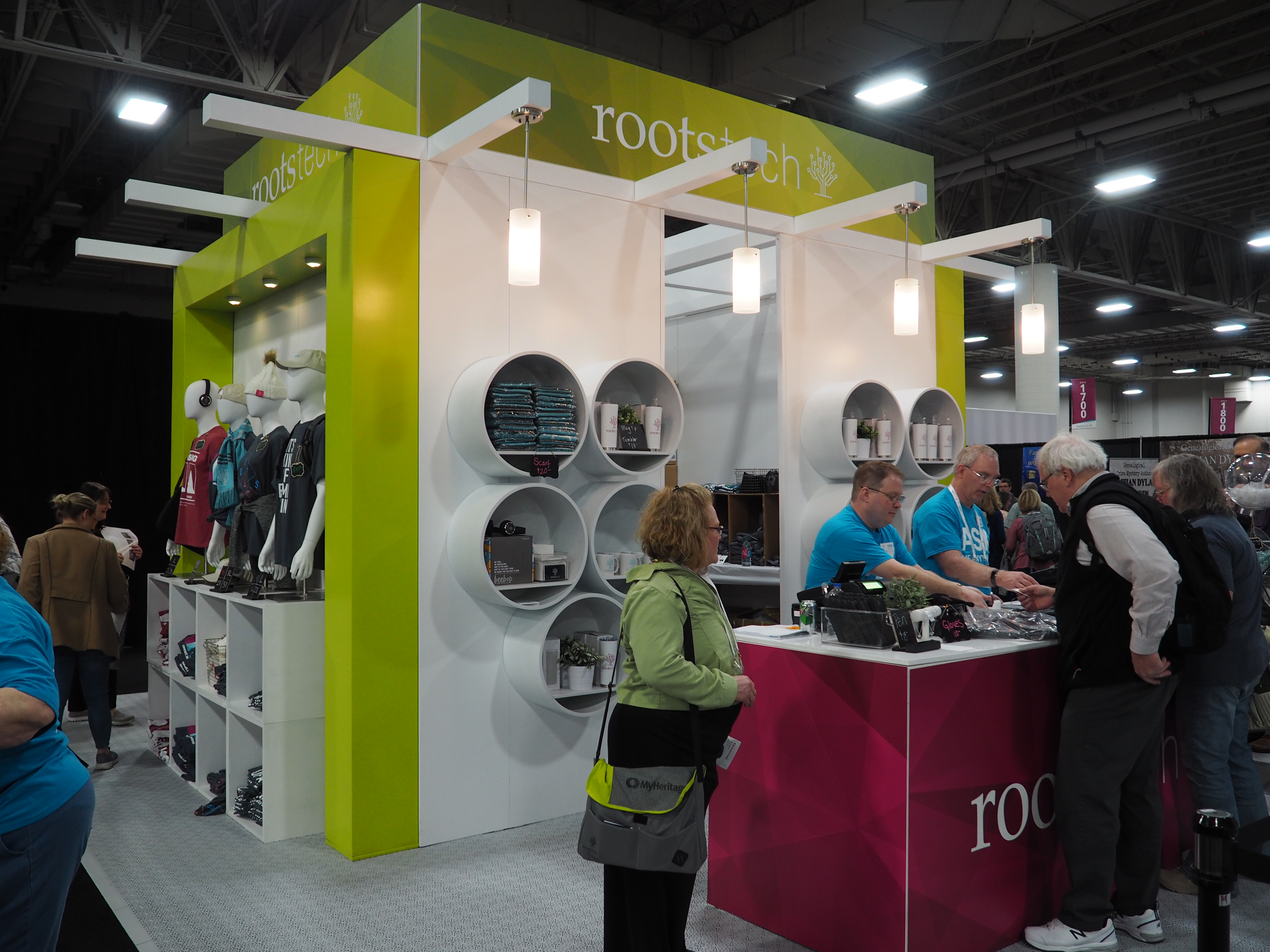
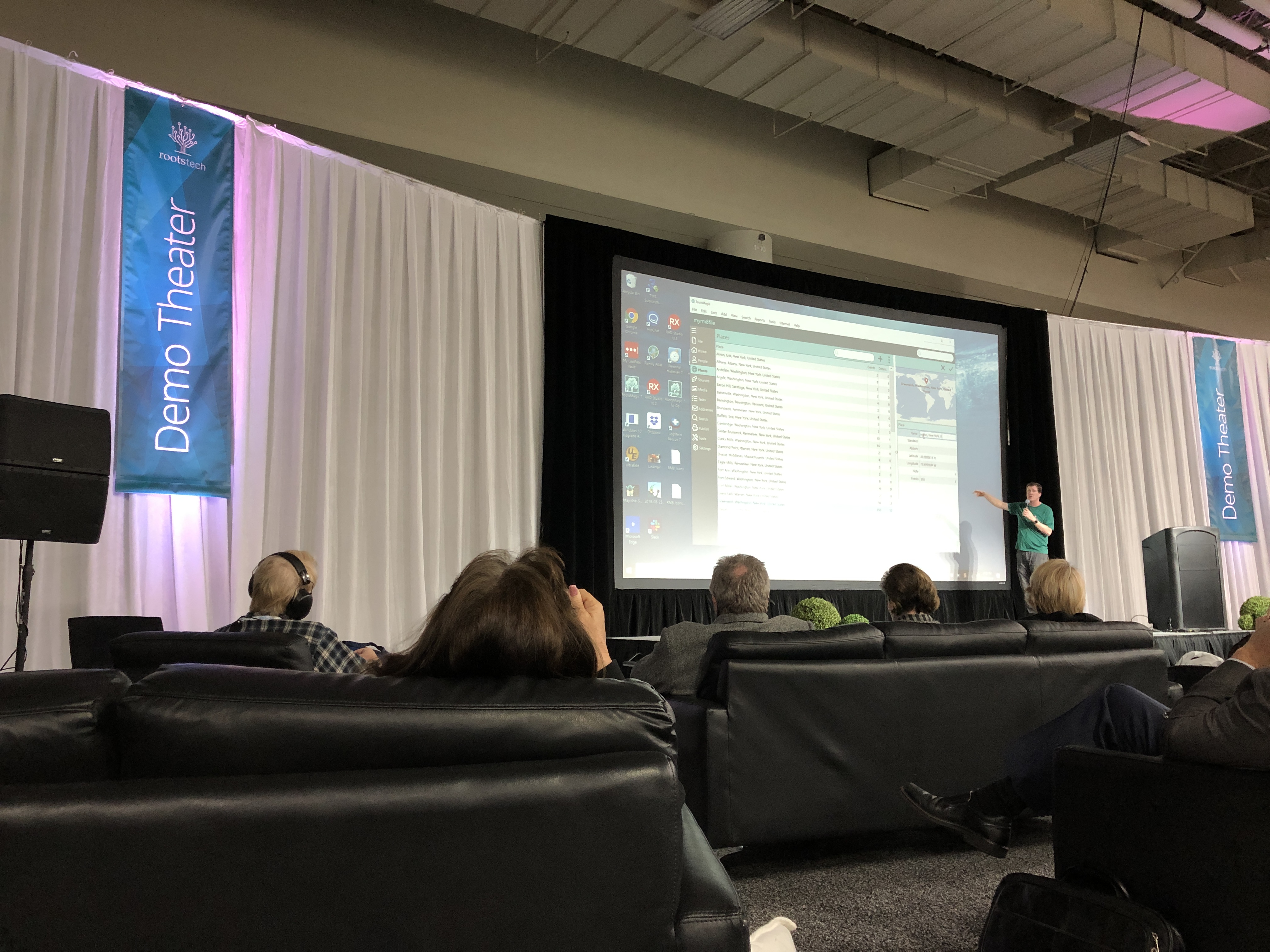



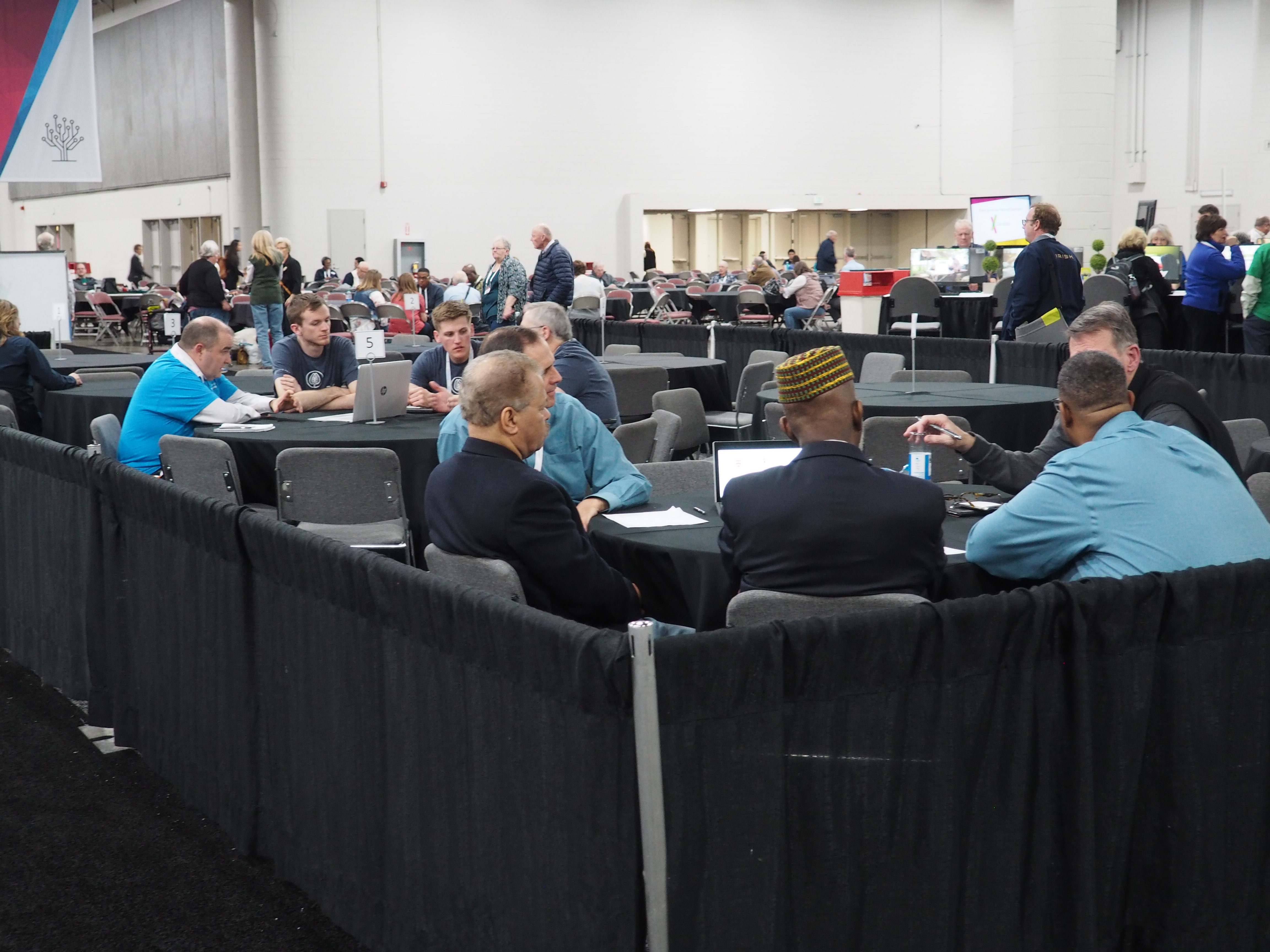 crammed into the space of about two booth footprints. Really didn’t like this shrinkage, and while I did see groups using it – it was also placed in the very back of the exhibit hall instead of in the front where it used to be. Most people I talked to never found its location, and with very little signage – I would say this looks like the last year for the Unconferencing area – as I’m pretty sure we were witnessing the death knell. Some of the presenters mentioned their disappointment with the size and location in our Facebook group – but also complained about the name – saying it was unfriendly, and not appealing. Perhaps it could be resurrected as something slightly different? Break-out sessions perhaps? Obviously, the large exhibitors enjoy great success with their own areas of demos and discussions – so the concept is not a bad one. But it would be nice to have a more tailored area for folks to discuss genealogy issues – or meet up with speakers after their sessions, or programmers to discuss concepts with users (as was its initial purpose.) Conversely, I also understand usage and statistics – if people weren’t using them in the previous years, I can understand the reduction.
crammed into the space of about two booth footprints. Really didn’t like this shrinkage, and while I did see groups using it – it was also placed in the very back of the exhibit hall instead of in the front where it used to be. Most people I talked to never found its location, and with very little signage – I would say this looks like the last year for the Unconferencing area – as I’m pretty sure we were witnessing the death knell. Some of the presenters mentioned their disappointment with the size and location in our Facebook group – but also complained about the name – saying it was unfriendly, and not appealing. Perhaps it could be resurrected as something slightly different? Break-out sessions perhaps? Obviously, the large exhibitors enjoy great success with their own areas of demos and discussions – so the concept is not a bad one. But it would be nice to have a more tailored area for folks to discuss genealogy issues – or meet up with speakers after their sessions, or programmers to discuss concepts with users (as was its initial purpose.) Conversely, I also understand usage and statistics – if people weren’t using them in the previous years, I can understand the reduction.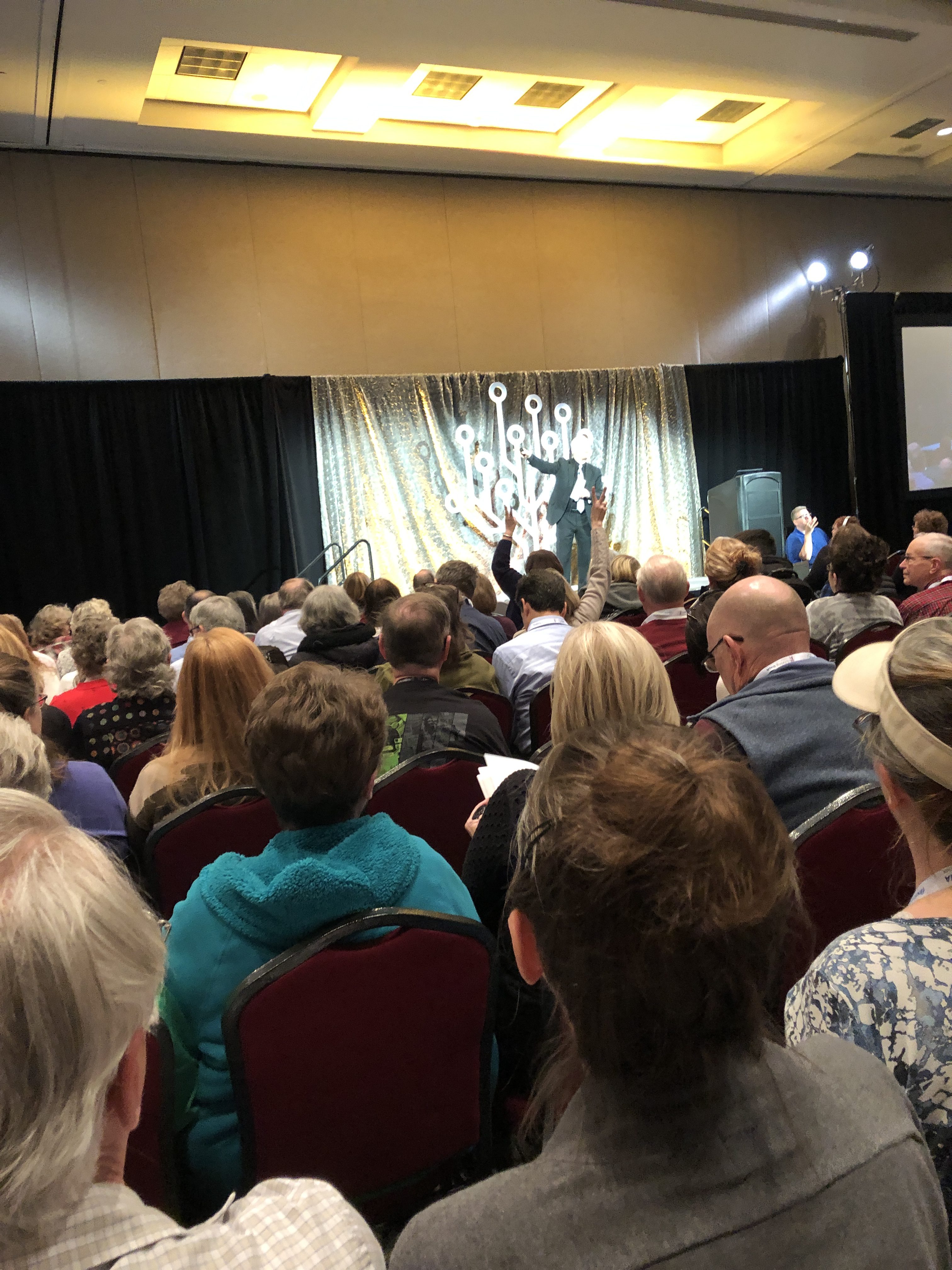 like a trauma victim – until there was only about a third of them left – was a red flag that most people didn’t understand the intended focus. As a whole – I would say this was RootsTech’s version of “Librarians Day” – or “Digital Archivist’s Day” – etc. Which makes all of this more intriguing. With the huge crowd coming in to learn about “Access and Preservation” – regular folks who were not information professionals – doesn’t that indicate that the general genealogy crowd is very interested in preservation and access – for their own collections? Perhaps? Or were they wanting to learn more about the efforts being made to place more unique material online? Or did they want to learn more about digitization best practices? This is an area RootsTech should investigate. It sure caught my attention when thinking about this after the event.
like a trauma victim – until there was only about a third of them left – was a red flag that most people didn’t understand the intended focus. As a whole – I would say this was RootsTech’s version of “Librarians Day” – or “Digital Archivist’s Day” – etc. Which makes all of this more intriguing. With the huge crowd coming in to learn about “Access and Preservation” – regular folks who were not information professionals – doesn’t that indicate that the general genealogy crowd is very interested in preservation and access – for their own collections? Perhaps? Or were they wanting to learn more about the efforts being made to place more unique material online? Or did they want to learn more about digitization best practices? This is an area RootsTech should investigate. It sure caught my attention when thinking about this after the event.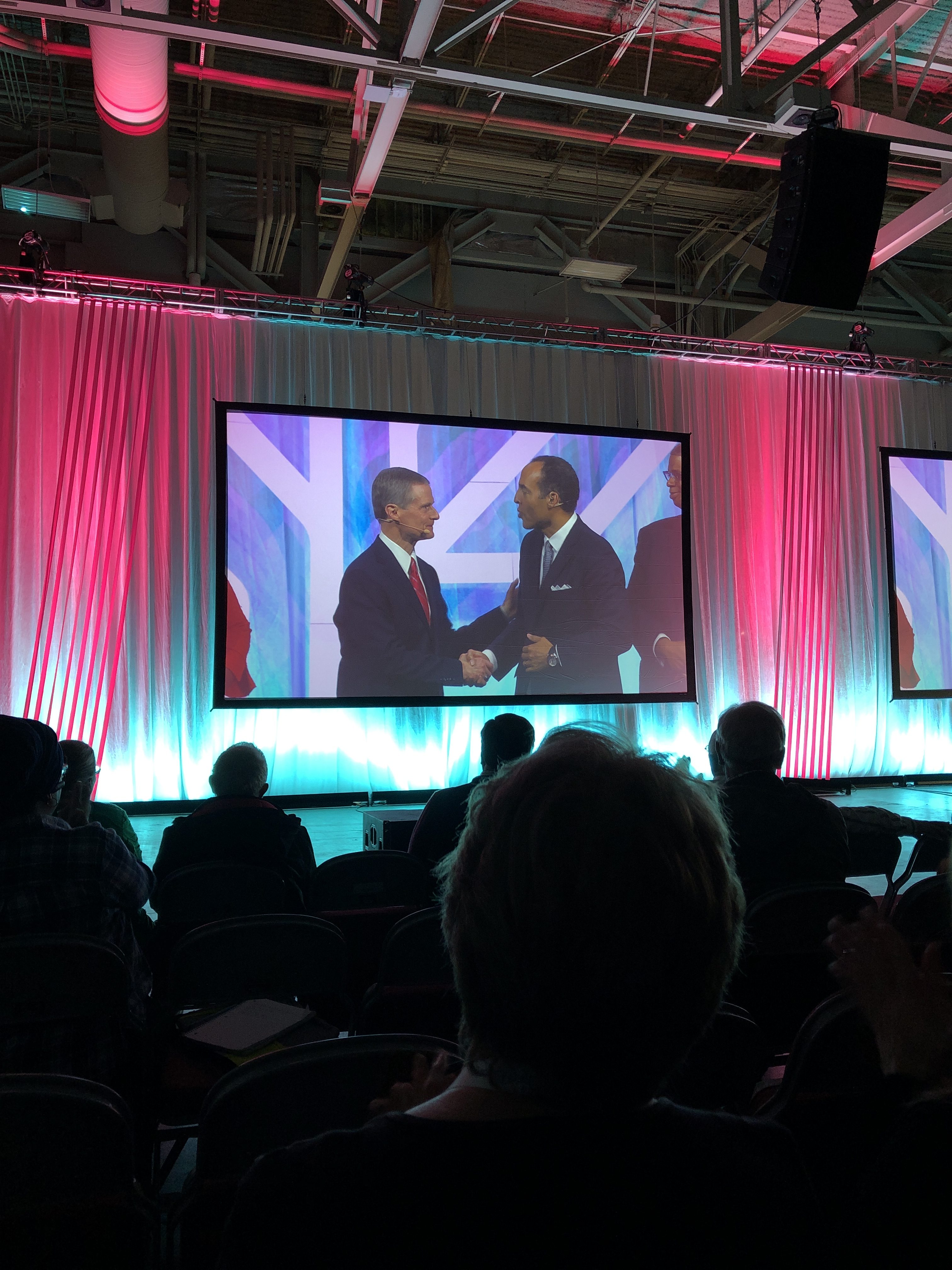
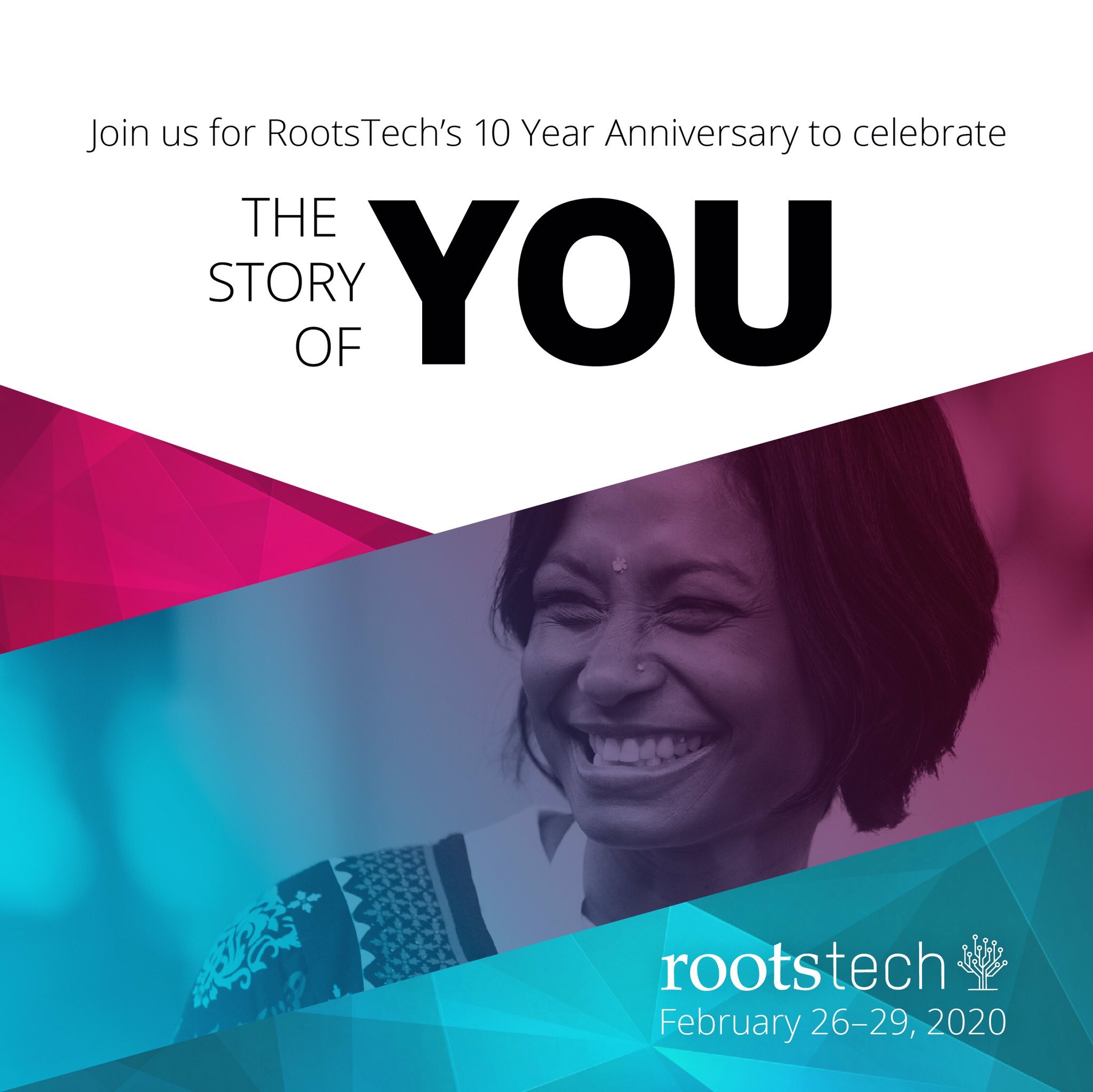

 My first attempt at a title for this post included a very naughty word: “My.” You see, this is the biggest obstacle when adding info to the
My first attempt at a title for this post included a very naughty word: “My.” You see, this is the biggest obstacle when adding info to the 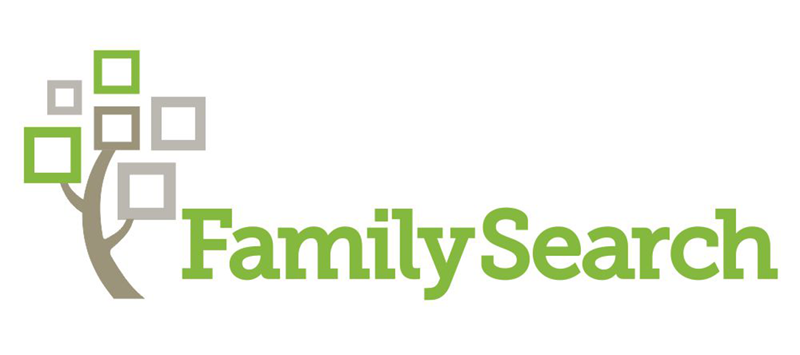
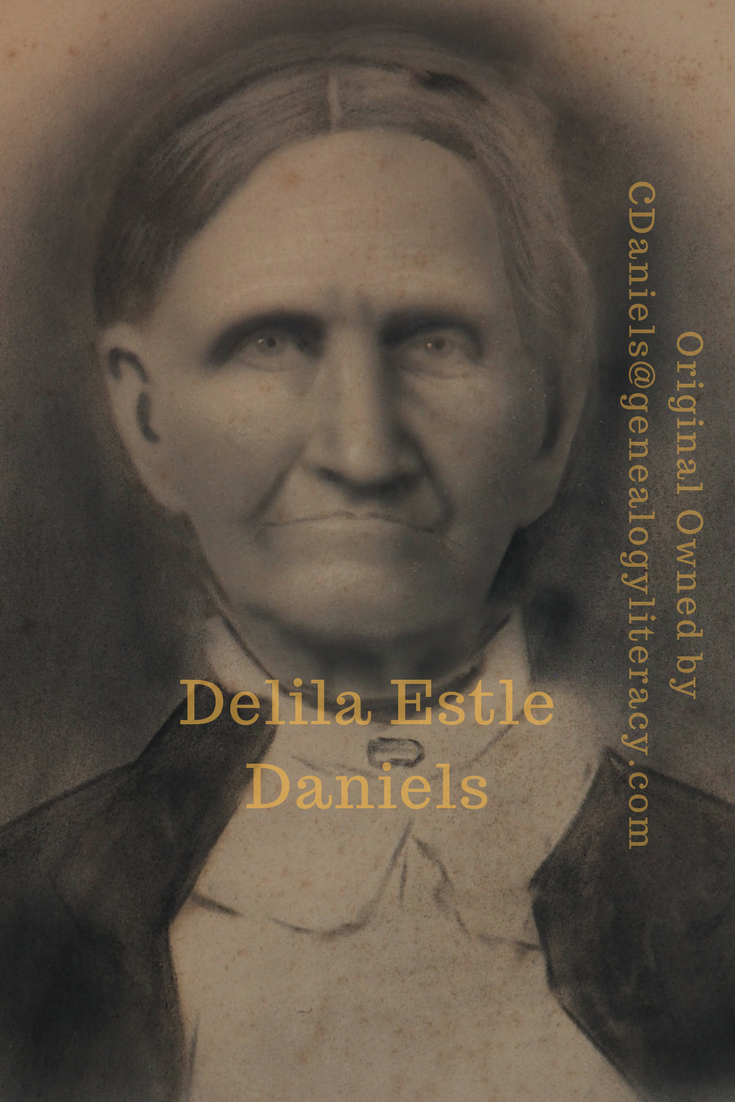 In the end, things were just fine, but it made me realize that I needed to spend some extra time and watermark the ancestral photos that were held in my personal collection. Once you upload a photo, people can move them around, but from now on, I will add a watermark that identifies the ancestor, as well as the current owner of the original (maybe not my full name, but initials and surname, or some such configuration – and maybe not a label that can be trimmed off.) Also, add a note as you upload to go with the photo – listing you as the owner, or where you got the copy. It’s the least we can do as an attempt to keep the right photo with the right person.
In the end, things were just fine, but it made me realize that I needed to spend some extra time and watermark the ancestral photos that were held in my personal collection. Once you upload a photo, people can move them around, but from now on, I will add a watermark that identifies the ancestor, as well as the current owner of the original (maybe not my full name, but initials and surname, or some such configuration – and maybe not a label that can be trimmed off.) Also, add a note as you upload to go with the photo – listing you as the owner, or where you got the copy. It’s the least we can do as an attempt to keep the right photo with the right person.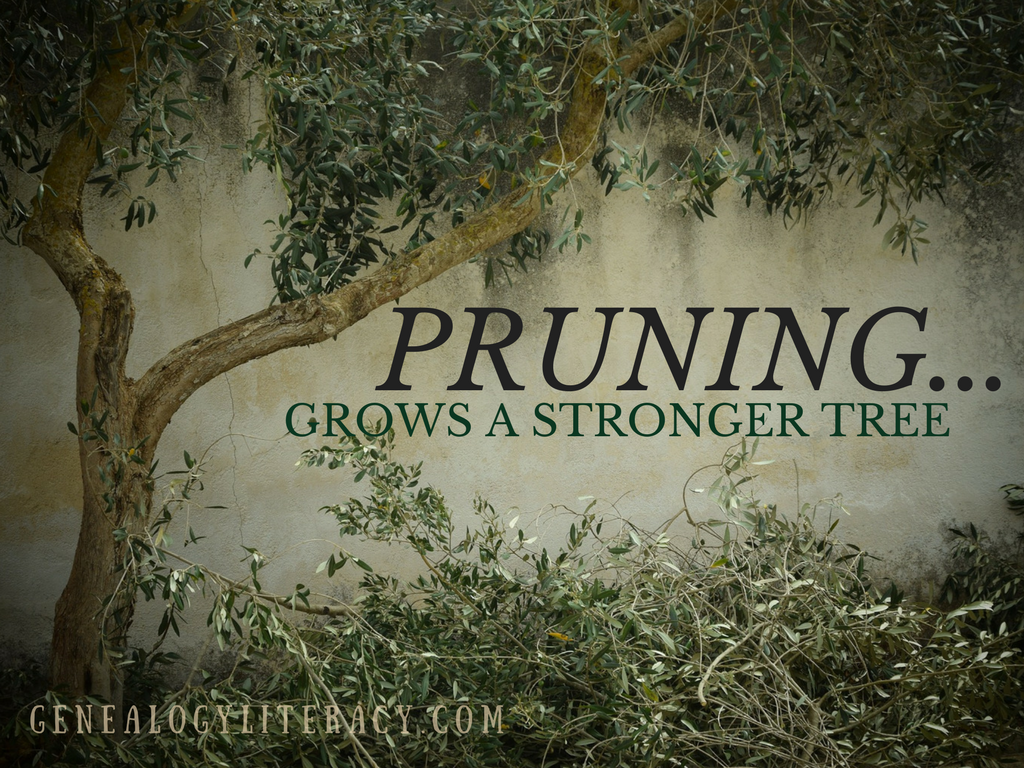

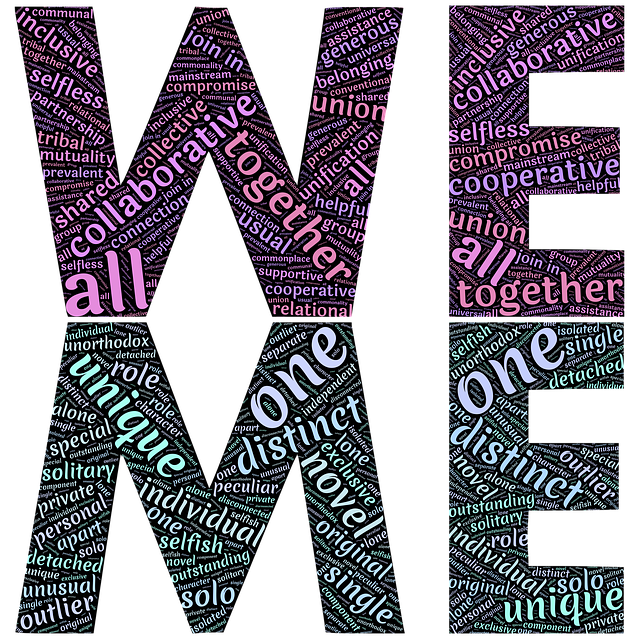 Moral of the story – Beef up the profiles, be kind, but be thorough, and don’t be afraid to communicate why you would like an element to stay. Collaboration is a GOOD THING! So far, people have been relatively nice about things if you reasonably explain the source behind a piece of information. Although, I have been tough on some lines, and chopped off a branch that ran wild with completely unsourced info – I detached with a notice that said “Please do not add parents of this person without citing a source – there are many theories out there, but no proof has been yet uncovered.” It’s a wonderful PSA to remind people about citing sources and the GPS – even if it is one little message at a time.
Moral of the story – Beef up the profiles, be kind, but be thorough, and don’t be afraid to communicate why you would like an element to stay. Collaboration is a GOOD THING! So far, people have been relatively nice about things if you reasonably explain the source behind a piece of information. Although, I have been tough on some lines, and chopped off a branch that ran wild with completely unsourced info – I detached with a notice that said “Please do not add parents of this person without citing a source – there are many theories out there, but no proof has been yet uncovered.” It’s a wonderful PSA to remind people about citing sources and the GPS – even if it is one little message at a time. a genealogy villain (misinformation) terrorizing a village with no superheroes to combat their dirty deeds. Just like indexing, I think we have a responsibility to dive headlong into the forest and make it a better place – with a myriad of opportunities to educate about resources as we go along.
a genealogy villain (misinformation) terrorizing a village with no superheroes to combat their dirty deeds. Just like indexing, I think we have a responsibility to dive headlong into the forest and make it a better place – with a myriad of opportunities to educate about resources as we go along.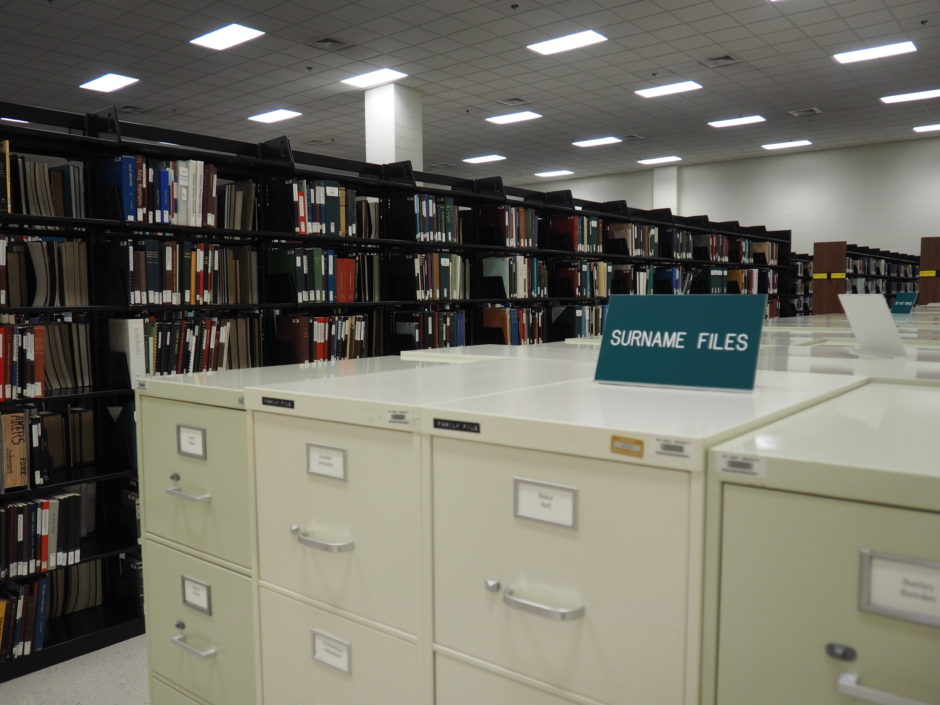
 I am writing this post with gritted teeth and a fake smile upon my lips – retaining a professional demeanor in the face of such a dangerous fallacy can be almost impossible. But I promised you undiluted genealogy – and here comes test case number 1! Quick – go get a cup of tea before reading further!
I am writing this post with gritted teeth and a fake smile upon my lips – retaining a professional demeanor in the face of such a dangerous fallacy can be almost impossible. But I promised you undiluted genealogy – and here comes test case number 1! Quick – go get a cup of tea before reading further! I was recently told a scary story (just in time for Halloween) about the construction of a new county courthouse – the locals in charge of building said courthouse, decided to opt for a closet sized research table to access records, because “No one conducts onsite research anymore – it’s all available on Ancestry!”
I was recently told a scary story (just in time for Halloween) about the construction of a new county courthouse – the locals in charge of building said courthouse, decided to opt for a closet sized research table to access records, because “No one conducts onsite research anymore – it’s all available on Ancestry!”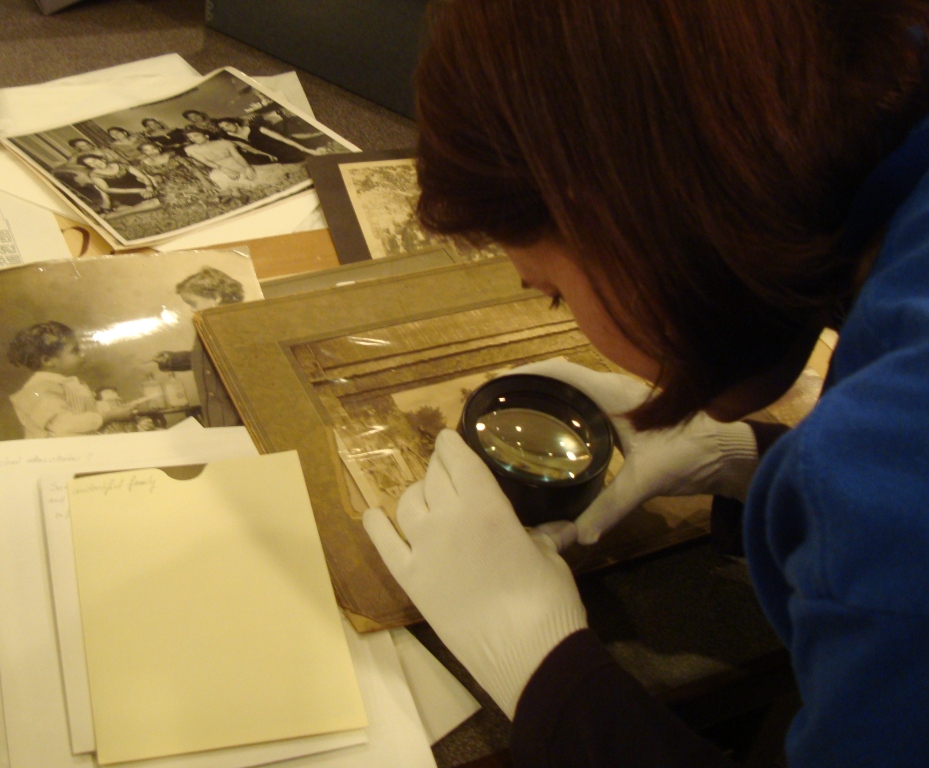
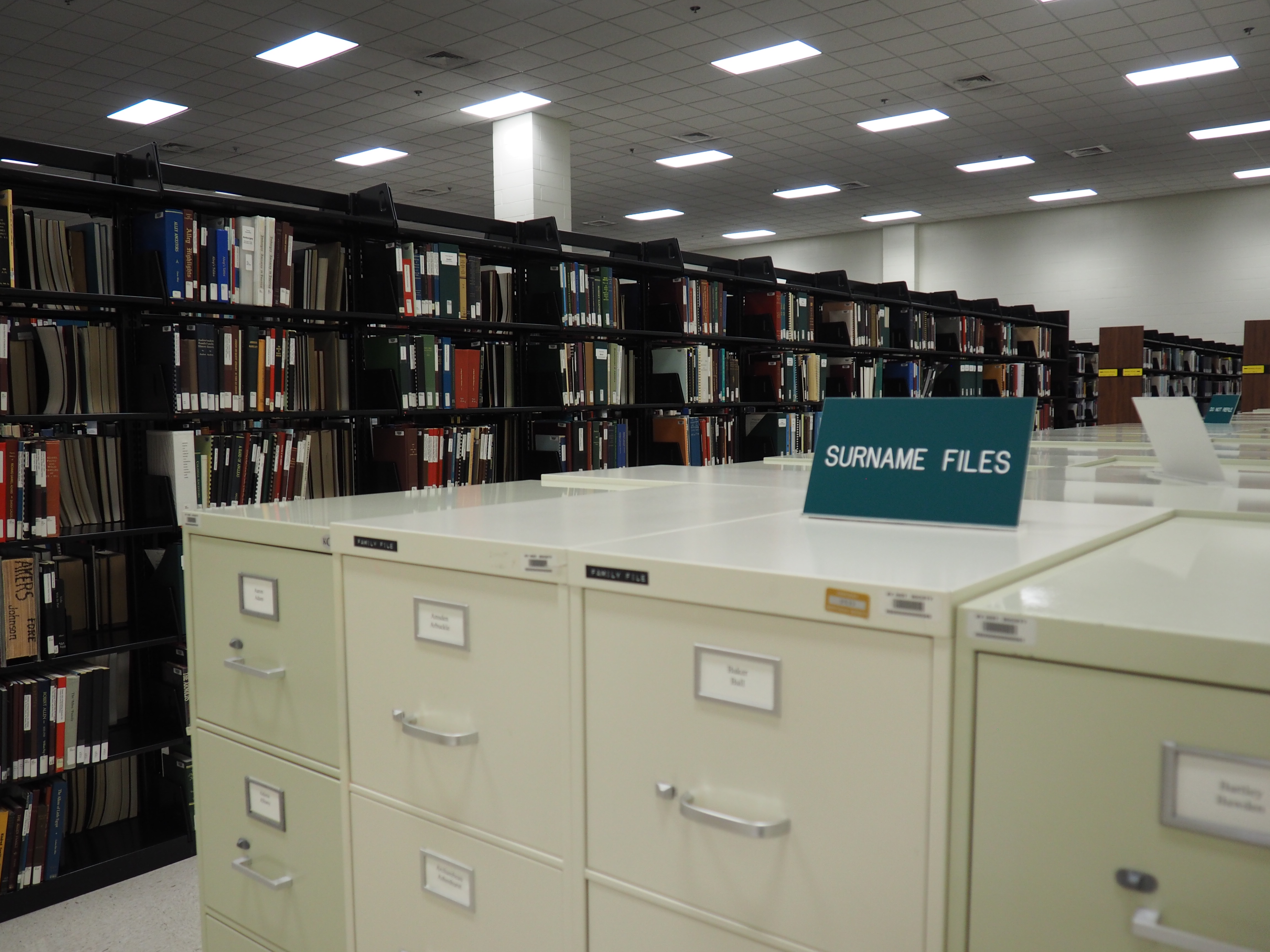
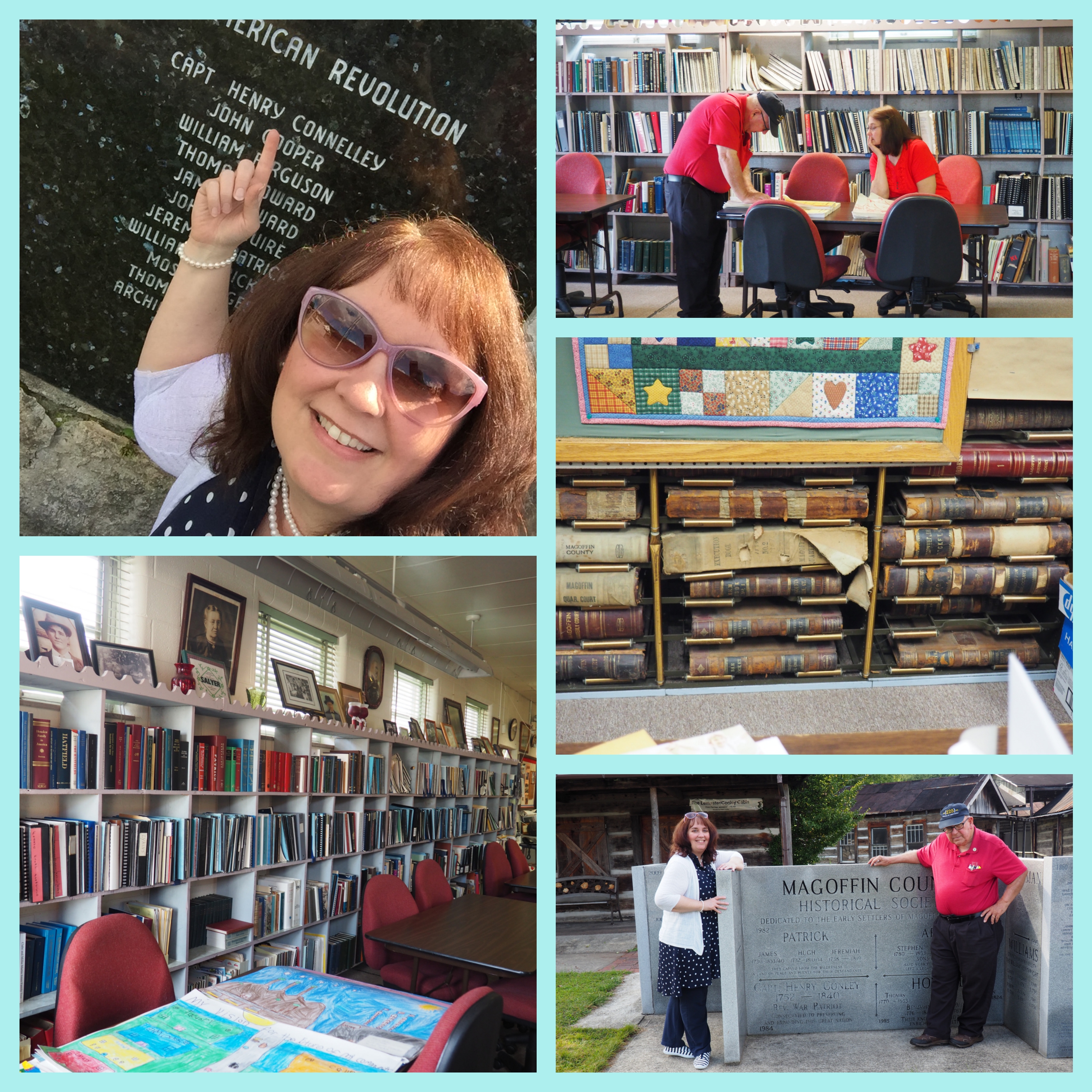 In short – always think of research as a multi-dimensional process. We are fortunate enough to have wonderful records at the tip of our fingers via super digitization efforts of many – but our research should NEVER stop there! Our storehouses of history contain the family records we need: Bible records, genealogy research files, correspondence, diaries, photos, school and Church records, etc. A fundamental principle of the
In short – always think of research as a multi-dimensional process. We are fortunate enough to have wonderful records at the tip of our fingers via super digitization efforts of many – but our research should NEVER stop there! Our storehouses of history contain the family records we need: Bible records, genealogy research files, correspondence, diaries, photos, school and Church records, etc. A fundamental principle of the